
How can we
keep cool
without
overheating
the planet?
Alternatives
Over the coming decades, humankind will need to adapt to inevitable rising temperatures and, at the same time, prevent temperatures from rising further. Limiting the temperature increase in the second half of the century will require mitigation, meaning actions that reduce the emissions of greenhouse gasses into the atmosphere. The upshot is that smart adaptation solutions will need to minimize the tension with mitigation. Fortunately, such solutions do exist. They include decarbonizing the electricity supply, increasing the energy efficiency of cooling appliances, ensuring appropriate thermal insulation to buildings, all while reducing the need for mechanical AC in the first place.
Available data shows that most people use ACs that are two to three times less efficient than the best available models, essentially because of the cost of appliances. In India for example, efficiencies of ACs are still hovering at a mere 14% of the theoretical maximum efficiency possible. While switching to ACs that do not rely on vapor-compression cycles is desirable, efficient technologies available today are still not available for the broader public on the market and will need more research and innovation. Therefore, bringing down the demand for space cooling electricity is key and, in this context, passive designs become fundamental. A myriad of techniques and technologies can be used today, and even principles dating back centuries can inspire the buildings of the future.
The technological and infrastructural dimensions of the cooling solutions space is very rich, but it is not just a matter of technology or architecture choices. Cooling behavioral adjustments happen constantly and they include personal adjustments, such as drinking or eating, the use of technology, such as ACs or fans, and changes in daily routines, such as naps, dress code, or even changing working and sleeping times.
The best-suited cooling solution for a specific building is determined by its surrounding space, where space refers not only to the physical environment, but also includes its cultural and economic context. This means that, if we want to change our cooling habits, we also need to modify the culture surrounding our use of energy, which has thus far pushed us to mechanically adjust interior temperatures according to our personal preferences.
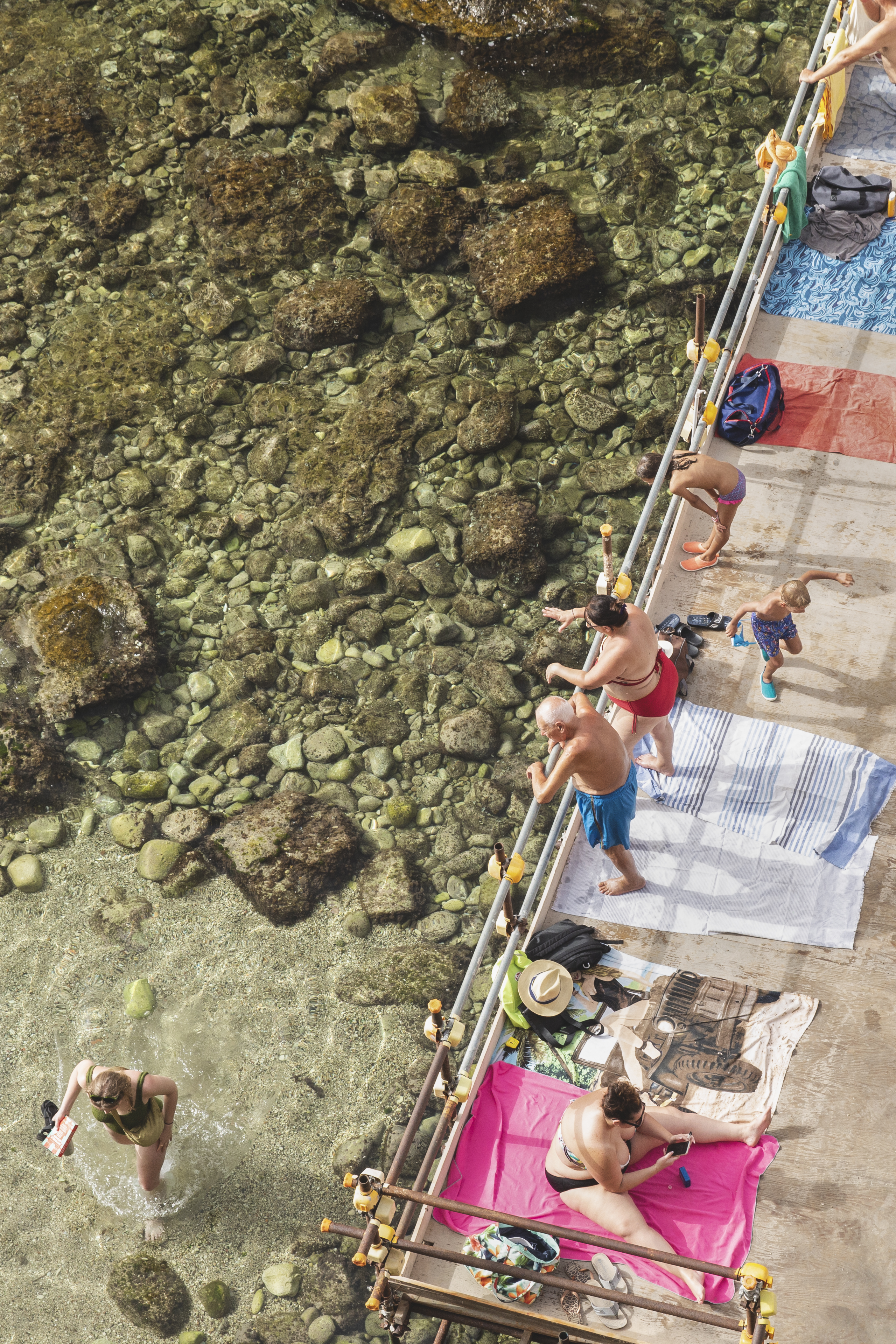
59% 30°C
Beachgoers seek relief from the heat on a platform built on the rocks of Siracusa, Sicily. Italy, 2022
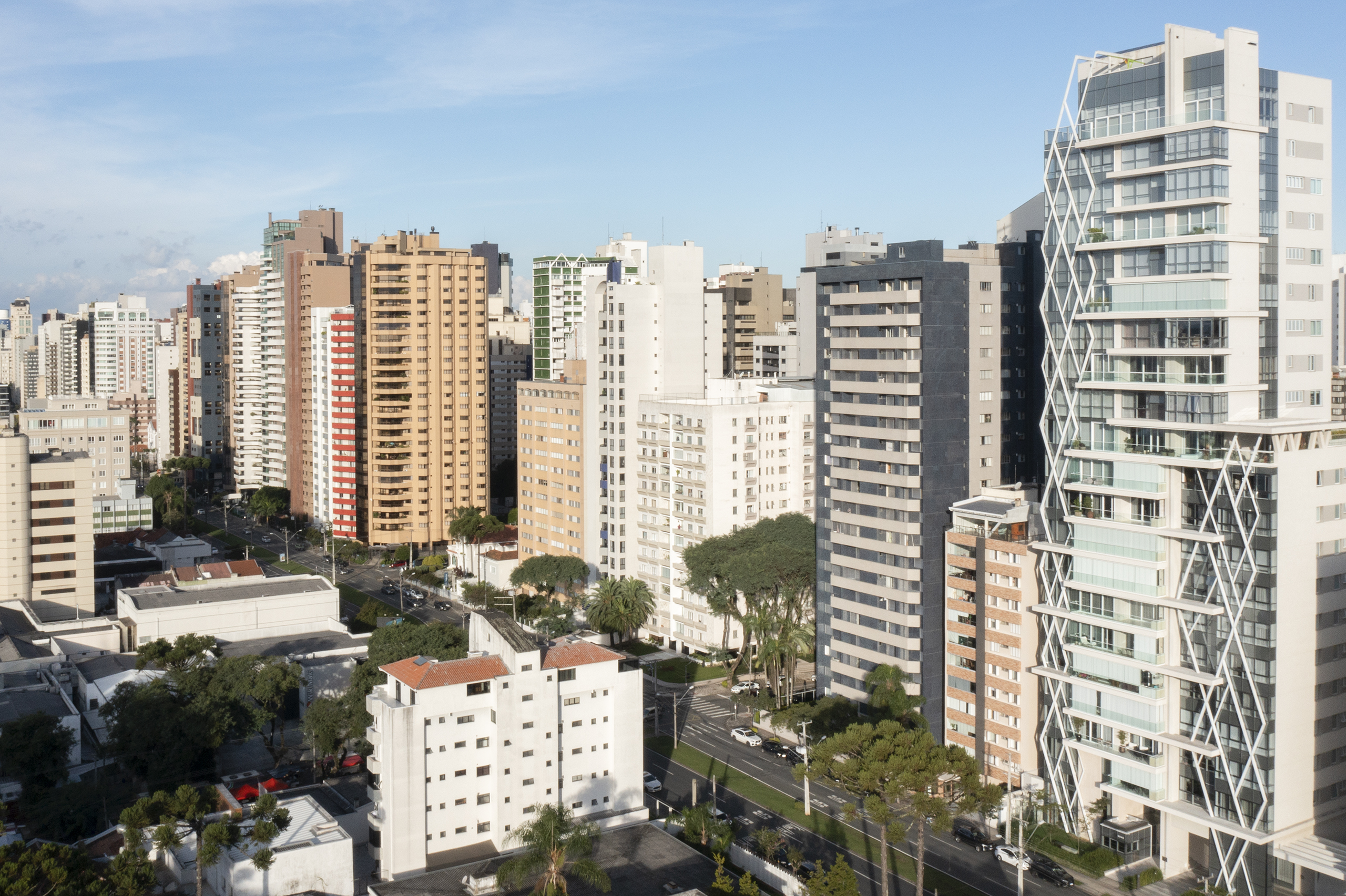
61% 25°C
Upper-middle-class residential buildings in the center of Curitiba. On the far right stands the most sustainable LEED-certified residential building in the world. Brazil, 2022
The decarbonization of energy is underway and clean energy investments are ramping up, but this is only part of the story.
In Europe, solar panels are now competitive with fossil fuels even at the utility level. Pushing decarbonization further requires incentives which, according to economists, should come from the implementation of carbon prices, which can essentially make fossil fuels even less competitive when compared to renewable sources.
Alongside decarbonization, reducing energy demand will also be needed and improving the efficiency of AC could contribute significantly to that goal. Paula Bezerra, researcher in energy planning, shows that, in Brazil, the increase in average AC equipment efficiency could compensate for the increased energy requirements associated with a world 2 degrees Celsius warmer.
In India, shifting the 2030 Indian stock of room ACs from the low efficiency technology to super-efficient ACs could save over 0.32 gigatons per year, roughly twice India’s solar mission. However, sound policies are needed because, as reported by Avikal Somvanshi, urbanist, “in 2023 the most efficient ACs are priced between the equivalent of 70 to 115 euro higher than the average AC, a big difference for Indian standards. This means that the minimum payback time thanks to electricity savings would be around 7 years, a period too long to enter the budget calculations of many families".
Energy consumption is also heavily influenced by building characteristics. For example, new buildings consume an average of approximately 40% less energy than old buildings. Numerous countries around the world plan to improve building codes in the context of the Paris Agreement, given its multiple benefits in terms of reduced emissions, energy poverty alleviation, and improved energy security. If well-designed and properly enforced, these codes represent a powerful tool to reduce climate vulnerability and energy costs, especially in emerging economies, where space cooling demand is expected to skyrocket.
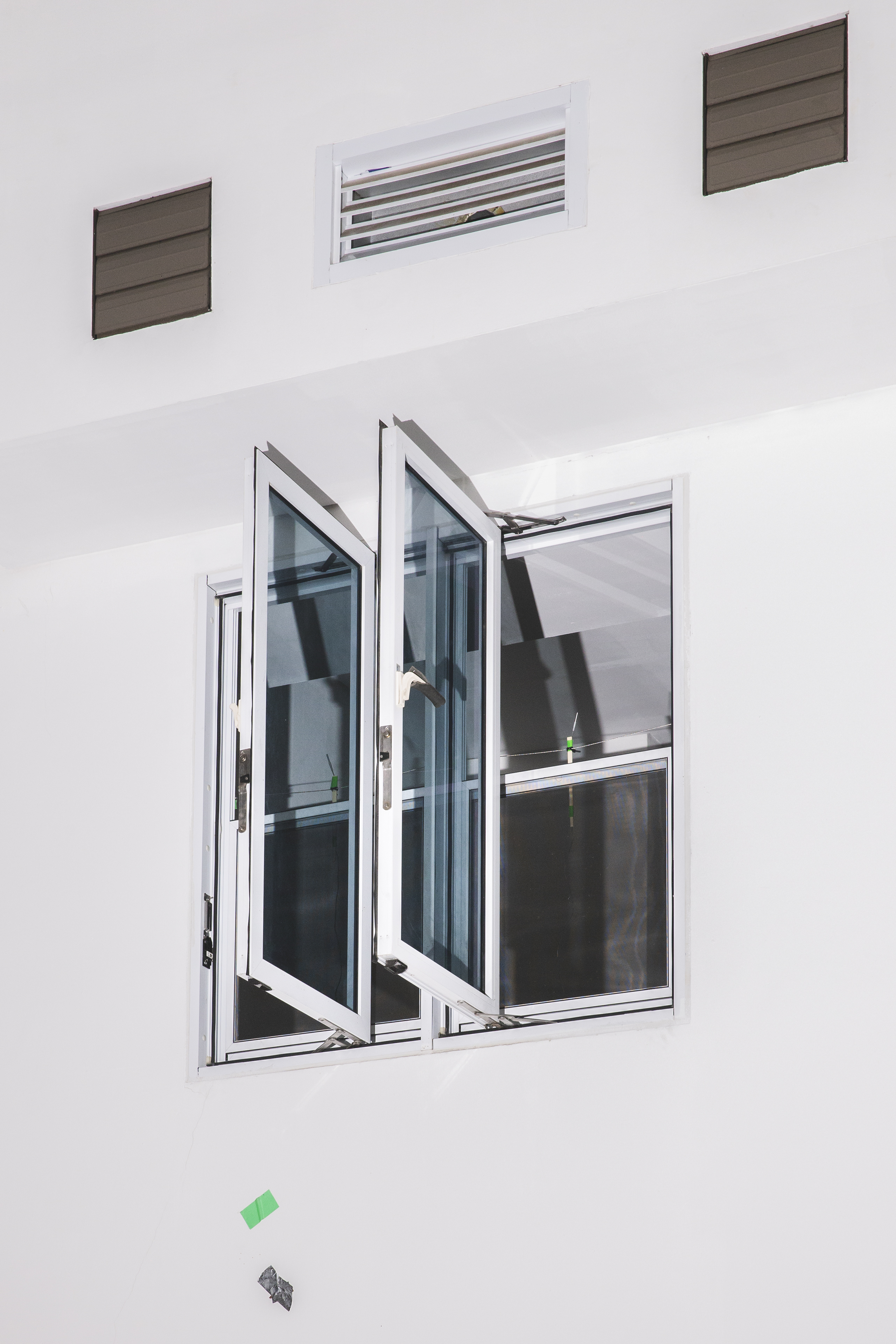
79% 28°C
A window with insulating glass is left open in a building used for life-scale experiments related to air circulation in social housing. Tegal, Indonesia, 2022
The Museum of Tomorrow
The Museum of Tomorrow is a science museum designed by Spanish architect Santiago Calatrava in 2015 in the city of Rio de Janeiro, Brazil. Built next to the waterfront at Pier Mauá, its AC system uses seawater associated with plate heat exchangers for heat rejection. Because of currents, the sea temperature in Rio de Janeiro remains low during the summer, close to 20 degrees Celsius. This is a very favorable condition considering that outdoor summer temperatures often reach 38 degrees Celsius. However, conventional AC systems relying on cooling towers use freshwater sources, where temperatures often exceed 29 degrees Celsius during the summer. This pioneering feature allows for highly energy efficient operation while eliminating water consumption in cooling towers. Efficiency strategies are not limited to the chilled water system. The museum's ventilation passes through a dedicated outdoor system with an enthalpy wheel for heat recovery and a desiccant wheel for dehumidification, important for ensuring controlled indoor conditions in a hot and humid tropical climate.
Very efficient AC systems already exist but they are not yet affordable for the vast majority of consumers.
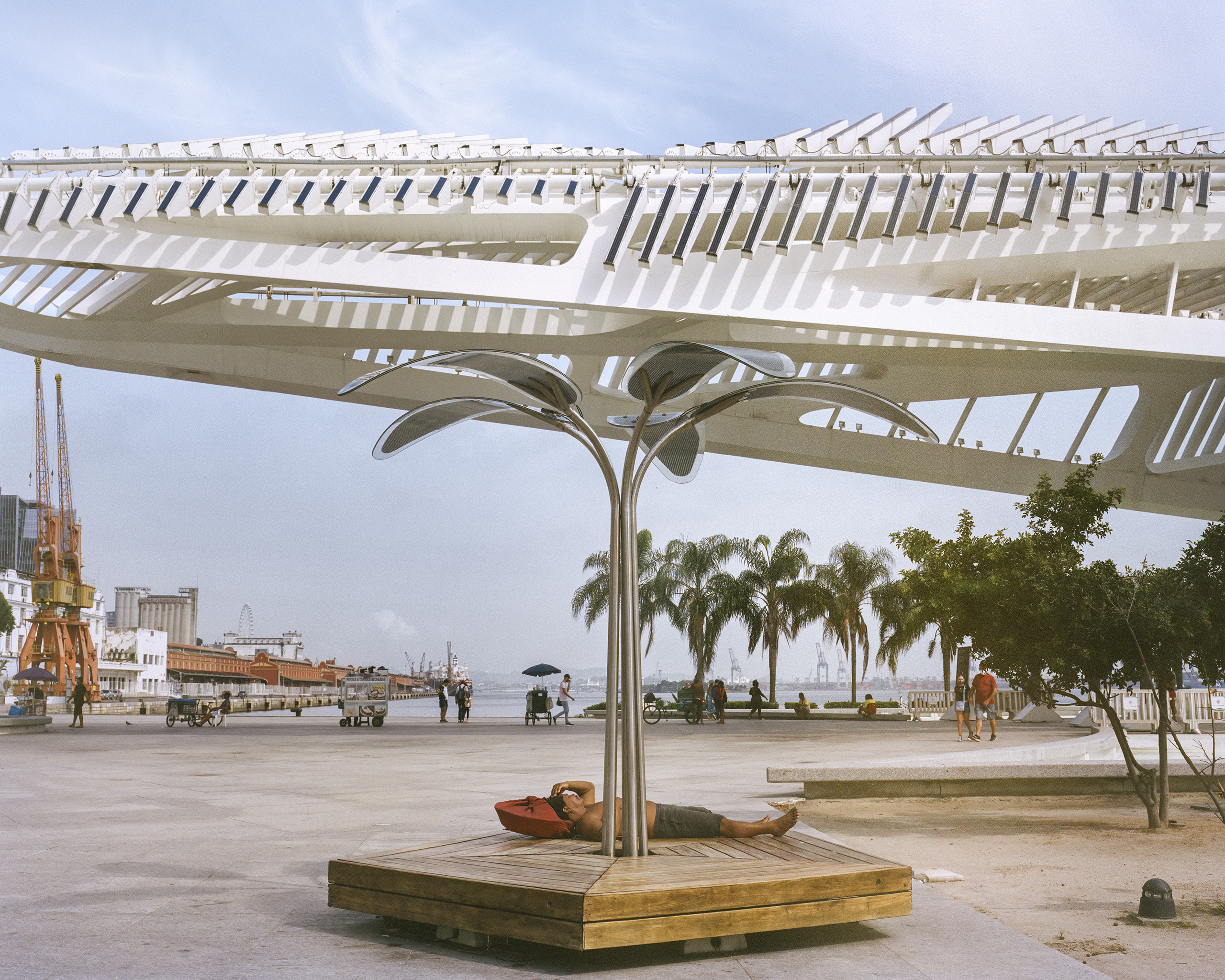
84% 26°C
A man rests in front of the Museum of Tomorrow, designed by architect Santiago Calatrava, in the Porto Maravilha area of Rio de Janeiro. Brazil, 2022
Zero Energy buildings
Curitiba is the capital of Paraná in Brazil and the largest city in the country’s southern region. Luckily, for its almost 2 million inhabitants, the city sits on a plateau at 932 meters above sea level, ensuring mild winters from June to August and cooler summers from December to March. This micro-climate makes AC unnecessary in this part of Brazil for most of the year. In this privileged context, Petinelli engineering firm in Curitiba designs highly efficient buildings branded as Zero Energy. These buildings are designed to have net zero energy consumption, meaning that the energy used by the building on an annual basis is equivalent to the amount of renewable energy generated on the site or by renewable energy sources offsite. Energy efficiency and Zero Energy buildings go hand in hand. The only way to make the zero-energy concept economically feasible is to improve building performance, therefore reducing the investments needed for on-site generation of renewable energy. With no additional costs with respect to traditional building construction, performance is improved by the use of cutting-edge heat pumps, high-efficiency windows and insulation, and solar panels. By combining energy efficiency in buildings and renewable energy, the CEO of the firm Guido Petinelli claims that “Zero Energy buildings can significantly reduce energy consumption and promote more sustainable building practices in sub-tropical climates”.
Energy efficiency is key for the economic feasibility of the zero-energy concept.
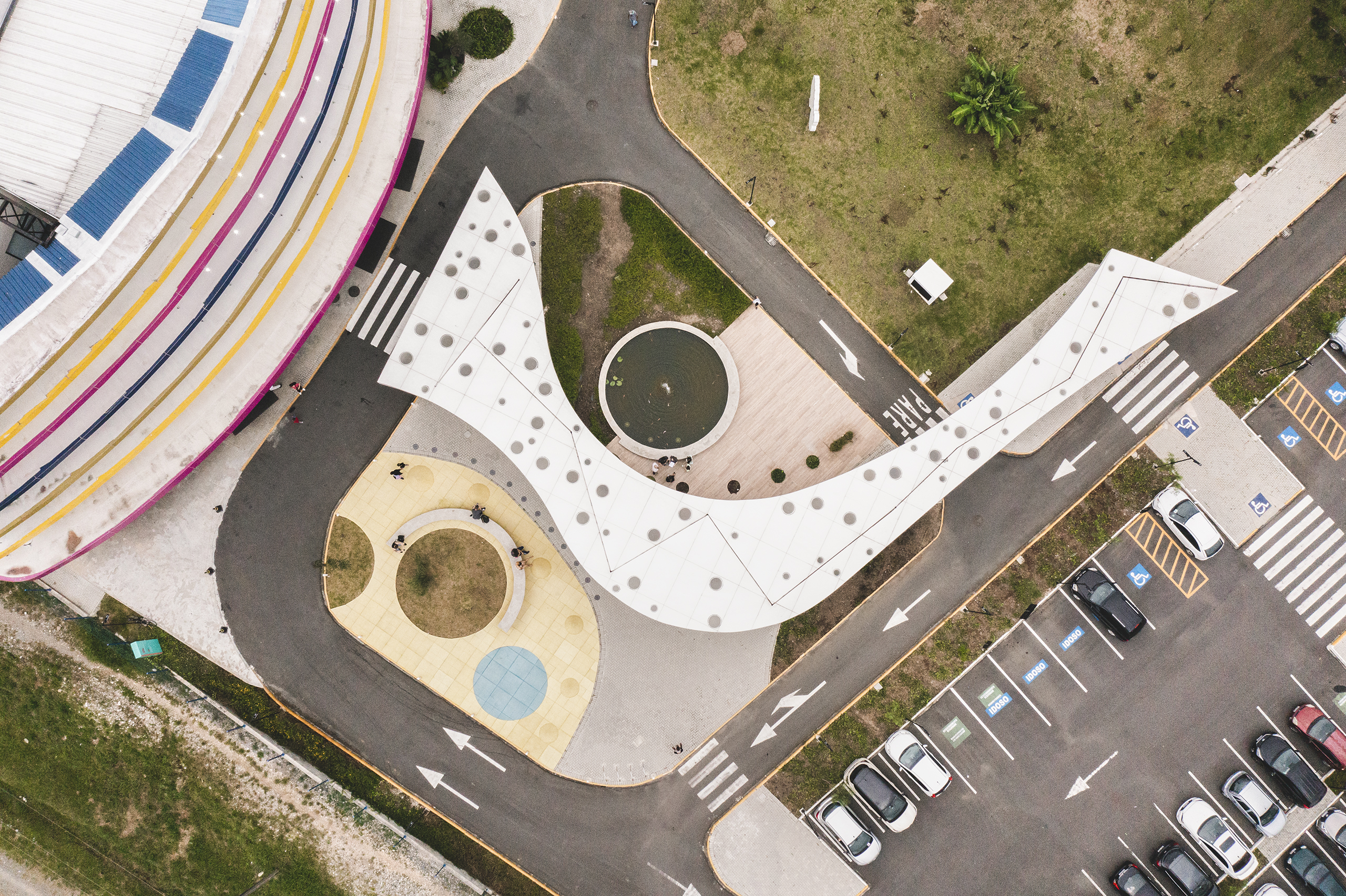
70% 23°C
An aerial view of the porch shading people from the sun at the entrance of Hospital Erastinho, a highly energy-efficient pediatric oncology hospital in Curitiba. Brazil, 2022
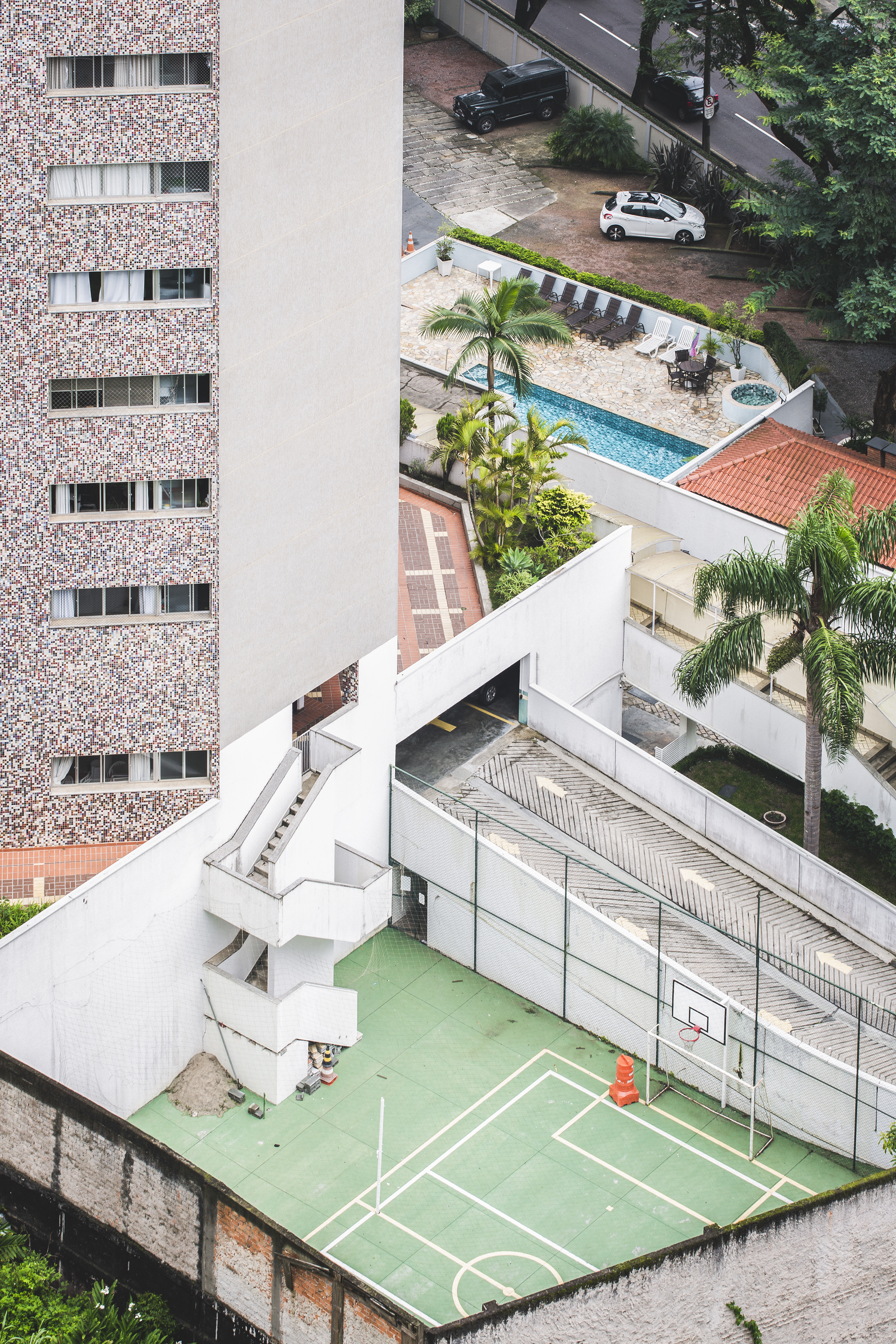
92% 19°C
The courtyard of a residential building in a central neighborhood of Curitiba, the capital of Paraná, one of the richest states of the country. Brazil, 2022
Green roof experiments
Using green roofs, ENEA tested the cooling potential of some spontaneous and native species of the Mediterranean regions, such as Echium plantagineum and Echium vulgare, plants that also contribute to the biodiversity of pollinators. Thanks to a sophisticated system of sensors for microclimate monitoring, researchers verified that the vegetable blankets covering the attic and external walls of the prototype building at ENEA's Casaccia Research Center, near Rome, are able to “maintain surface temperatures below 30 degrees Celsius and therefore avoid the strong thermal variations that occur on the surface of roofs and walls without vegetation, which reach temperature peaks of over 50 degrees Celsius in the hottest hours”, explains Patrizia de Rossi, researcher at the energy efficiency unit department. “Preliminary data suggest that a reduction in electricity consumption of about 2 kilowatt-hours per square meter can be achieved over a summer. On average, this translates into an electricity saving of around 200 kilowatt-hours for the air-conditioning of a 100 square meter house, while ensuring an indoor temperature always below 26 degrees Celsius".
In summer months, green roofs can achieve a reduction of indoor temperatures of up to 3°C, while eliminating 20% of volatile organic compounds in the air.
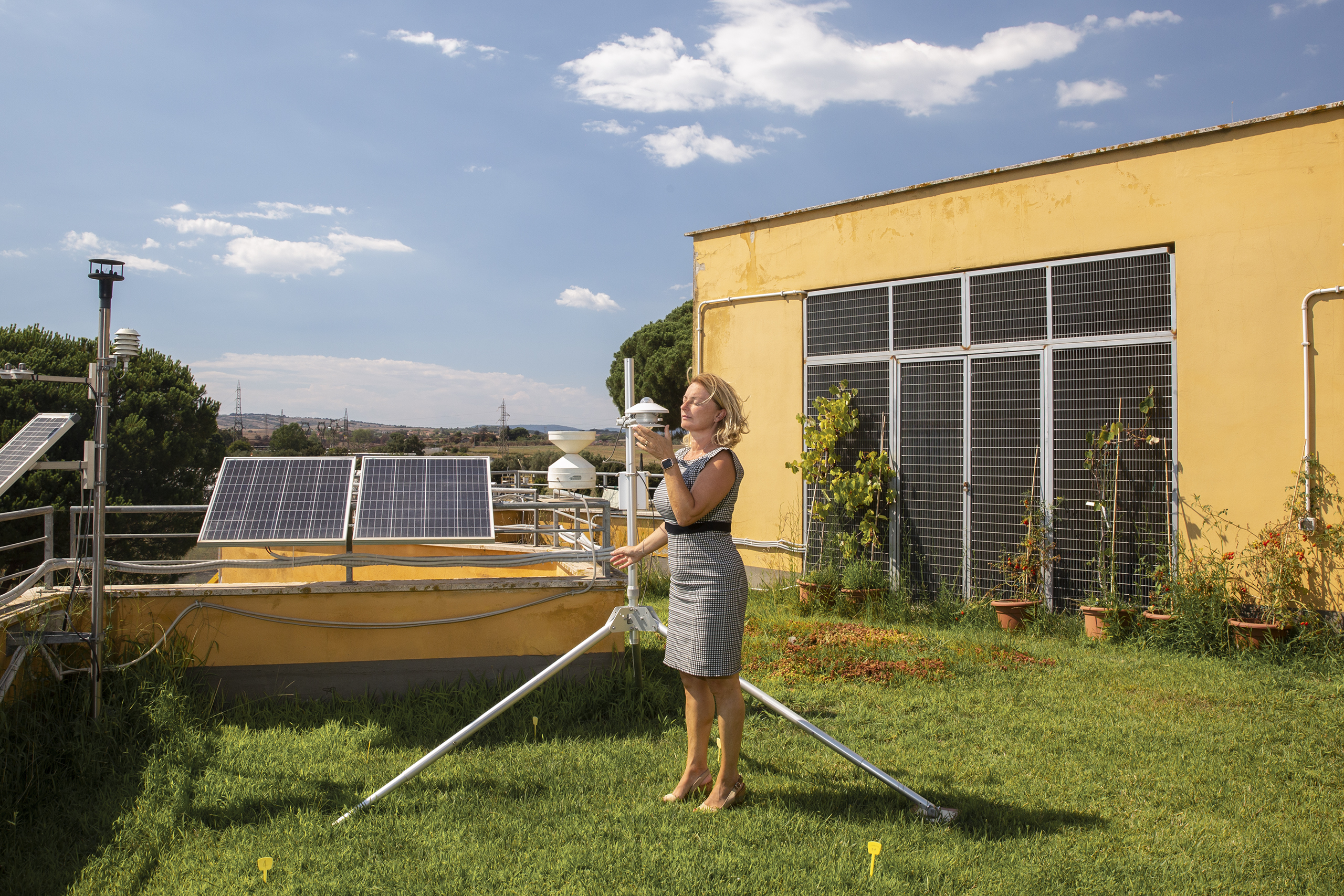
Patrizia De Rossi, researcher, checks the solar radiation sensors on the roof of the experimental building of Enea Casaccia, in the suburbs of Rome. Italy, 2022
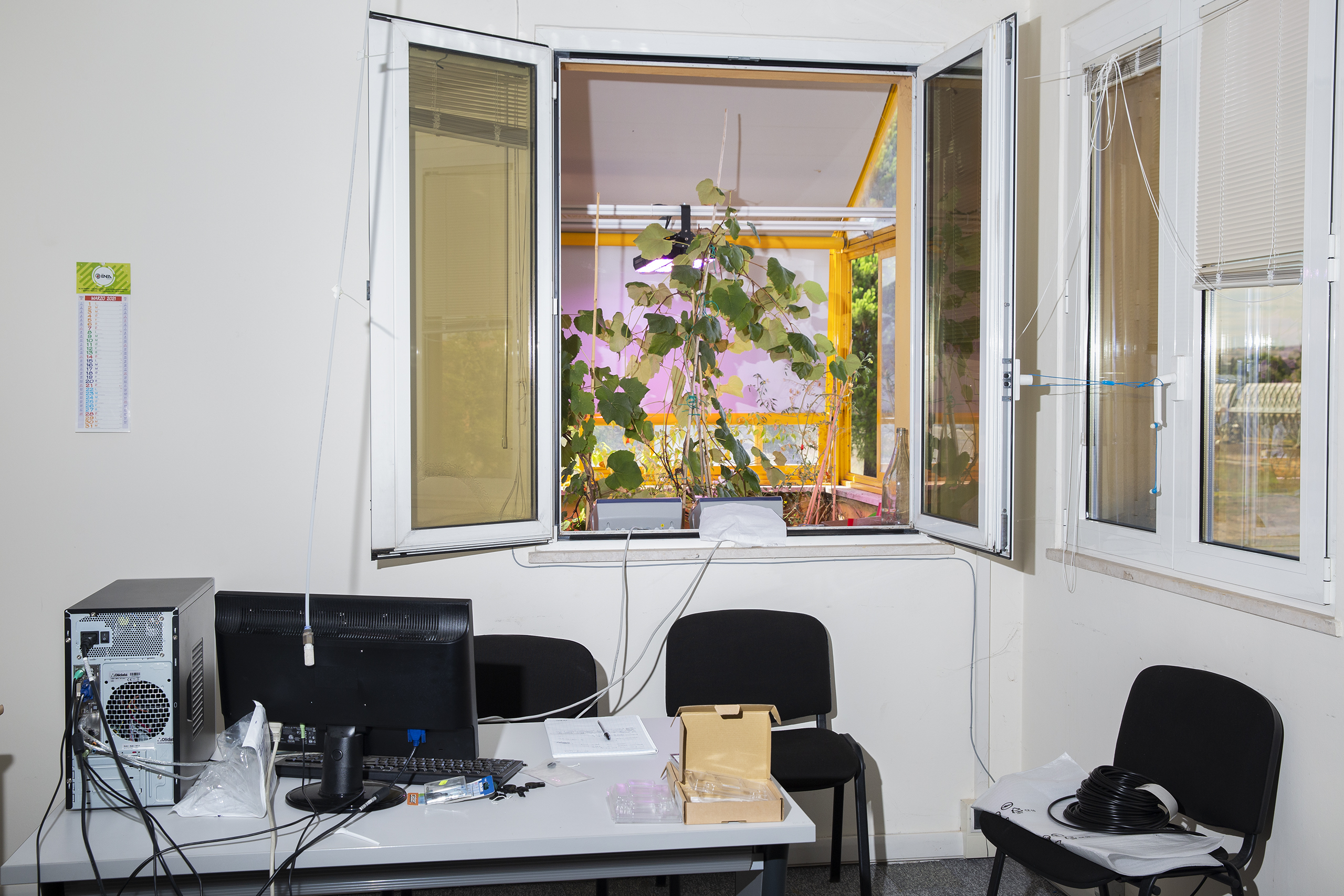
A monitoring station measures the cooling effect of the plants seen in the background, growing on the passive solar greenhouse of the experimental building of Enea Casaccia. Italy, 2022
Low carbon social housing
In the town of Tegal, Indonesia, energy-efficient buildings for social housing are being tested. The techniques proposed focus on reducing the amount of carbon emissions produced by apartments. To achieve this, researchers have developed various methods. For example, they use a phase change material to increase the thermal mass of the floor structure. This helps regulate the temperature in apartments by absorbing and releasing heat energy as needed. The researchers have also installed exhaust fans to enhance the nocturnal cooling effect through night ventilation, which further helps cool down the apartments. One of the ways they are improving ventilation is by using horizontal pivot windows that bring in wind speeds that are 1.7 to 2.6 times higher than at floor level. Additionally, the researchers installed a radiant floor cooling system that reduces the average diurnal Standard Effective Temperature by 0.67 degrees Celsius in the middle of the room compared with rooms that have a simple opening. Overall, the proposed low-carbon techniques will be implemented in all newly constructed affordable public apartments for a total area of more than 2,000 square meters, including Rusunawa and Rusunami in the town of Tegal. The techniques developed are also proposed to be incorporated in building codes and guidelines for construction of affordable public apartments in the town of Tegal.
A number of affordable features for building designs can greatly reduce the need for AC in the first place, even in tropical countries.
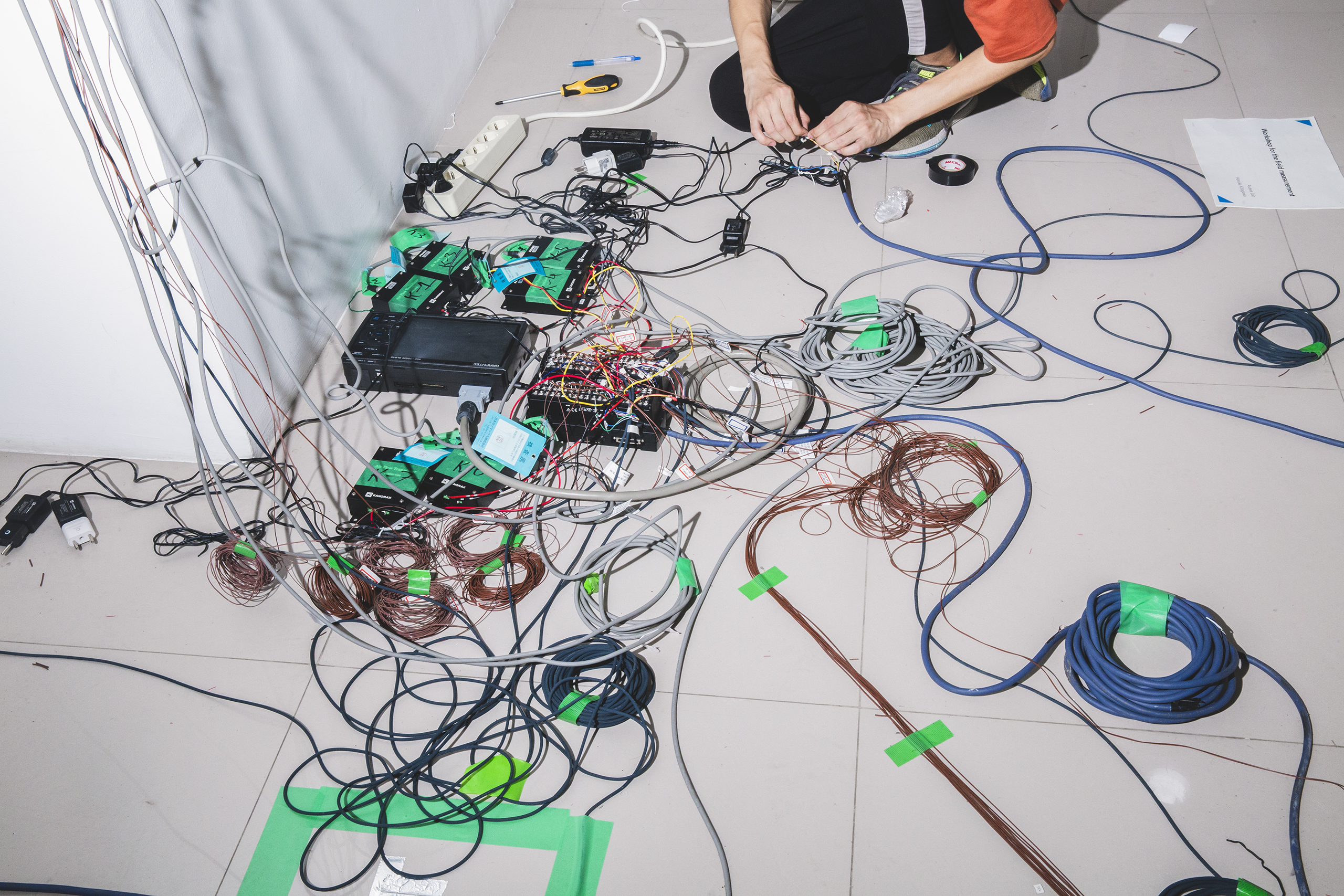
92% 27°C
Tasuku Maeda, 23, graduate student from Japan, adjusts the cables and sensors for wind and temperature measurements in a building used for life-scale experiments in Tegal, Java. Indonesia, 2022
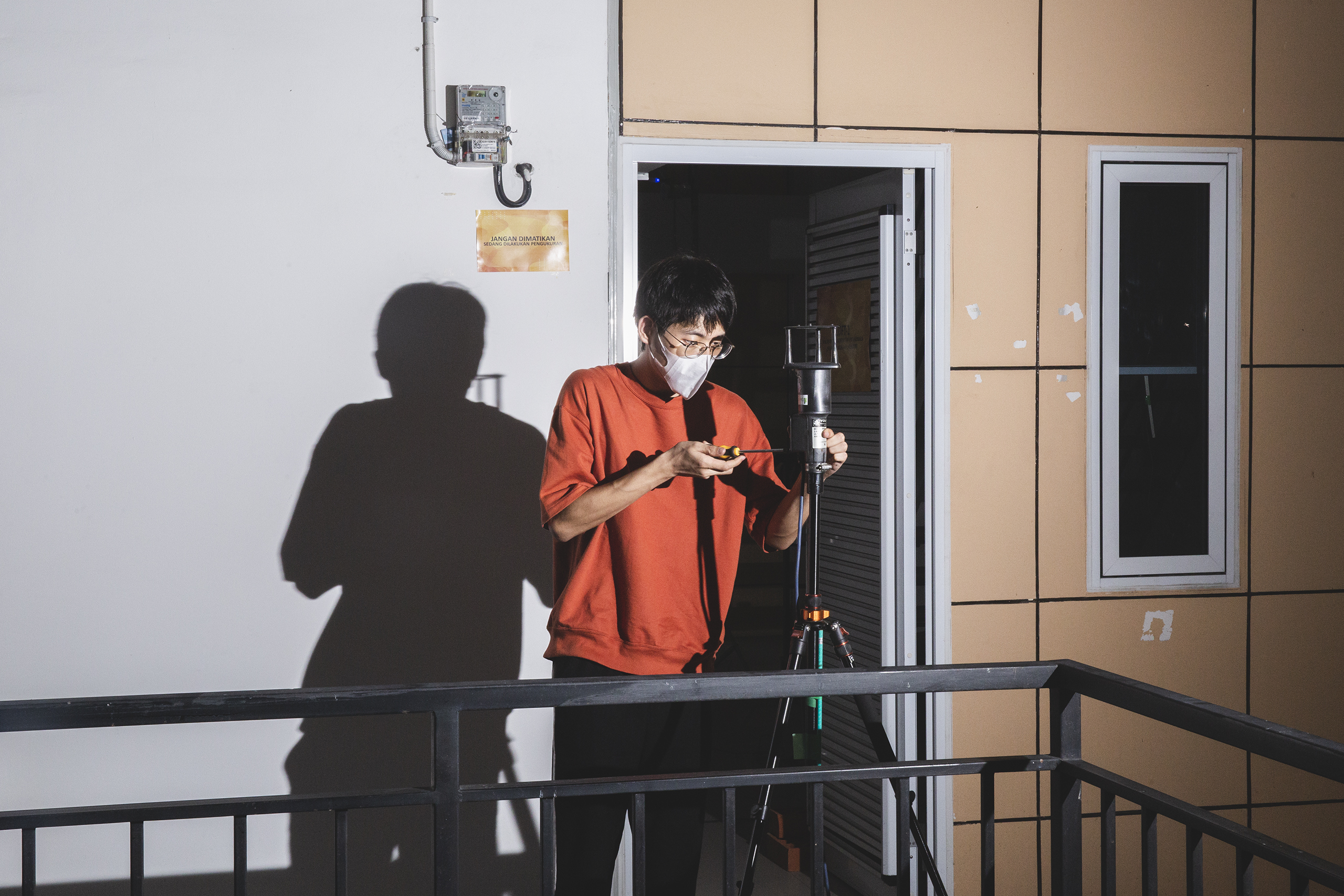
92% 27°C
Tasuku Maeda, 23, adjusts a wind sensor in a building used for experiments on air circulation in social housing in the city of Tegal, Java. Indonesia, 2022
Revolusolar social projects
The lack of access to affordable, reliable, and sustainable energy in low-income communities in Rio de Janeiro is a major issue in informal urban settlements. Revolusolar is a nonprofit organization that provides distributed solar energy to low-income communities in Rio. The volunteers the community through professional training and children’s workshops, making them the protagonists of the process. Revolusolar makes photovoltaic technology accessible to low-income communities by providing solar installations through a rental model, professional training, children’s workshops on sustainability and energy, as well as research, events, and advocacy. They bear the upfront costs of investing in solar PV, and essentially rent their PV panels to households. They have already installed three photovoltaic systems in Rio, also thanks to young professionals trained in the favela, generating about 15,600 kilowatt-hours per year and saving 15,000 reais in energy expenses annually. They created the first distributed energy generation cooperative in the favela of Babilônia in Rio, with Revolusolar providing coordination, fundraising, contracting, and ongoing maintenance of the photovoltaic generator, as well as administrative support.
Social projects can exploit rental models to make photovoltaic installations a widespread reality for low income communities.
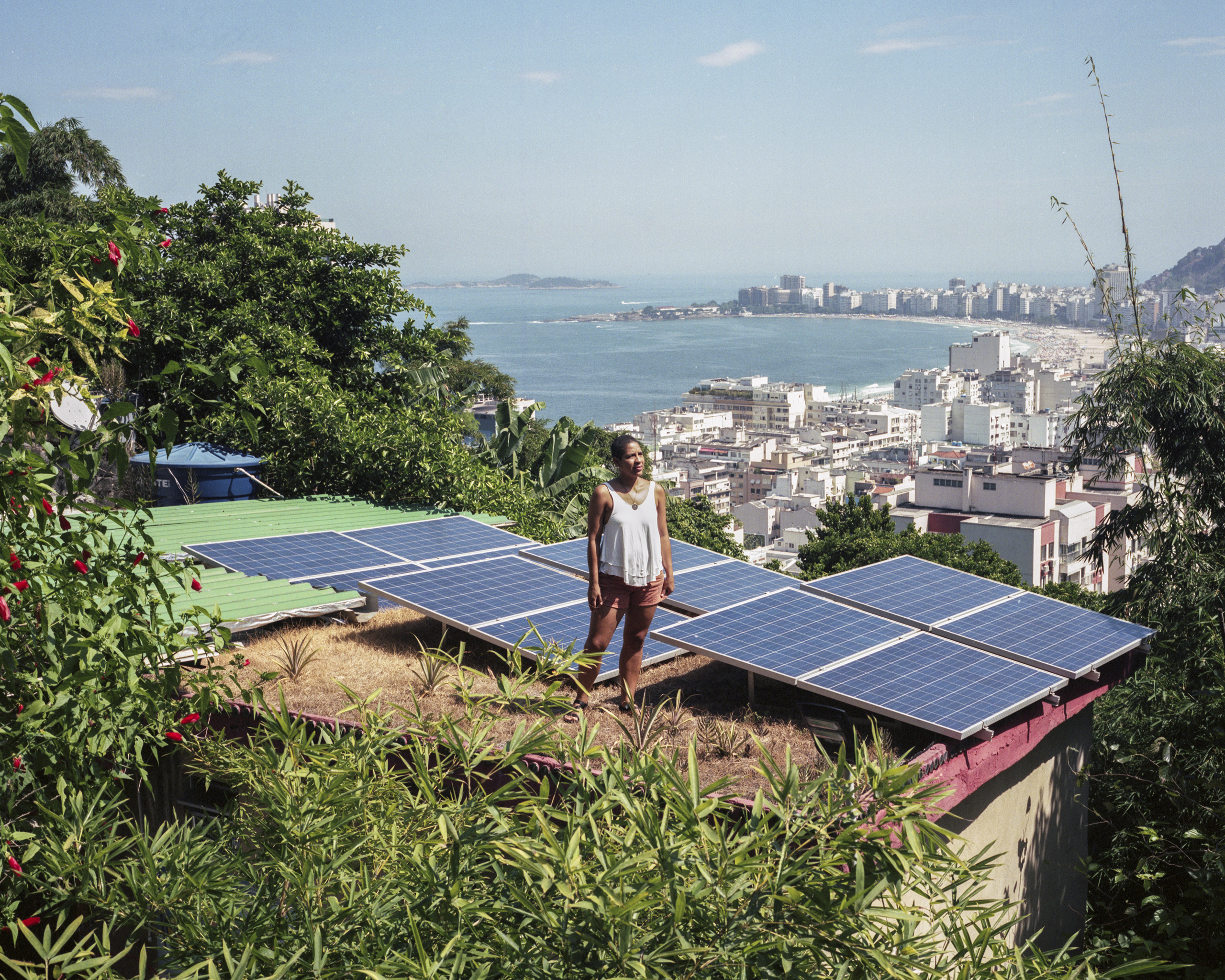
52% 32°C
Bibiana Angel Gonzales, 39, Colombian, stands on the roof of her house and B&B powered by Revolusolar in the Babilônia favela in Rio de Janeiro. Brazil, 2022
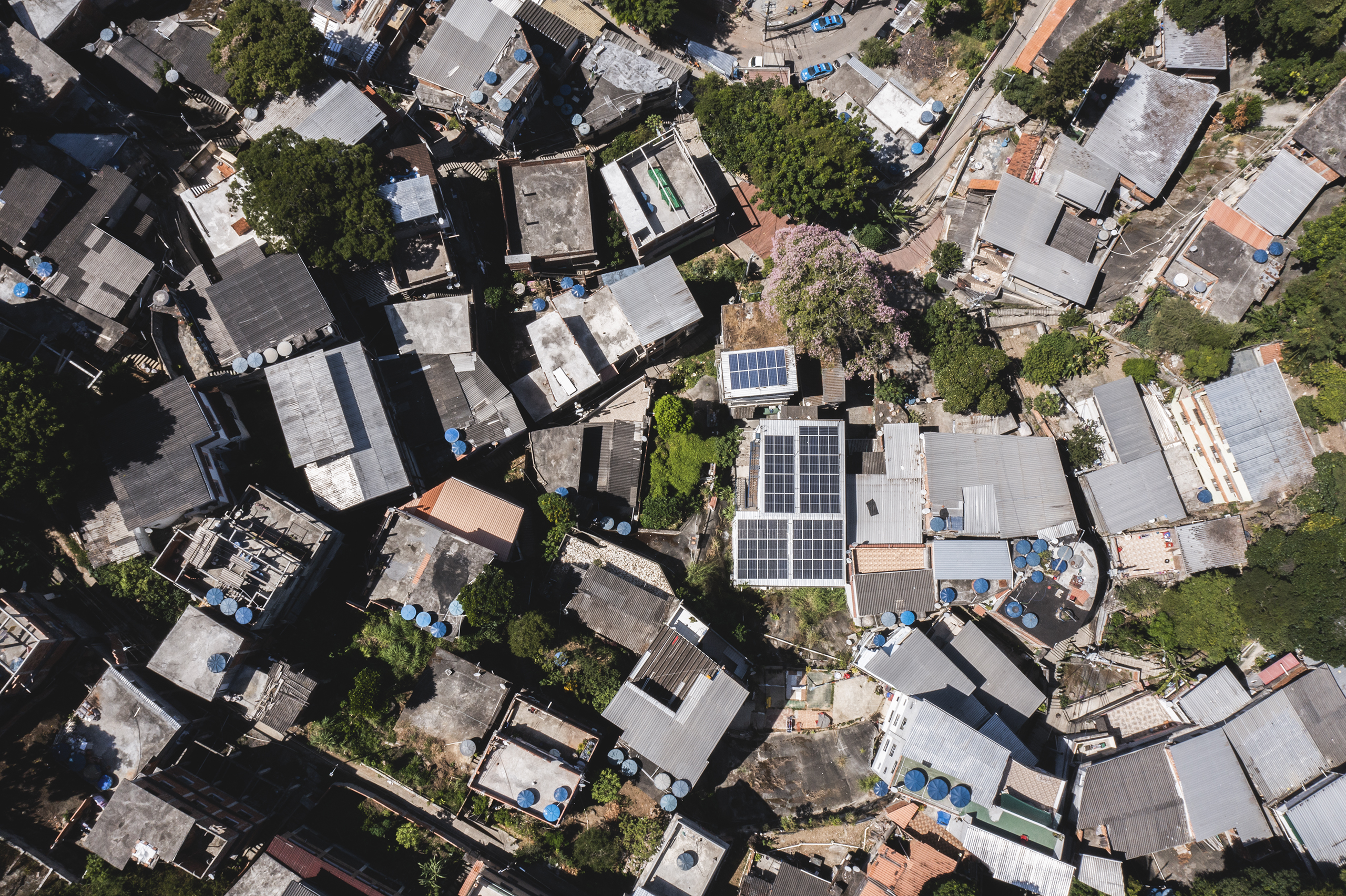
55% 31°C
An aerial view of the Babilônia favela in Rio de Janeiro reveals some of the solar roof panels installed in the area by Revolusolar. Brazil, 2022
The Ministry of Public Works and Housing
Built in 2011 and operating since 2012, the main building of the Ministry of Public Works and Housing in Jakarta has 17 floors, with a total gross area of 25,590 square meters. Initially, the building was designed in a rectangular form facing east and west, causing it to be exposed to sunlight all day. A design modification was implemented to reduce sun radiation. The rectangular shape was changed into an “H”, with offices in the north and south parts of the building, while the public area remains at the center. The design modification aimed to maximize daylight performance while minimizing sun radiation. The building is made with state-of-the-art technologies such as thermal resistant glass, external surface film insulation and perforated materials that enhance heat dissipation. To optimize daylight inside the offices even with sun shading on windows, clear glass partitions are used in the office rooms. The lighting system uses light and motion sensors, coupled with scheduling controls to allow a constant optimal mix between natural and artificial light at different times of the day. The building also features a natural ventilation system in the lobby area and a centralized AC system with energy efficiency features.
Wise building design can reduce exposure to sun radiation while enhancing natural light indoors.
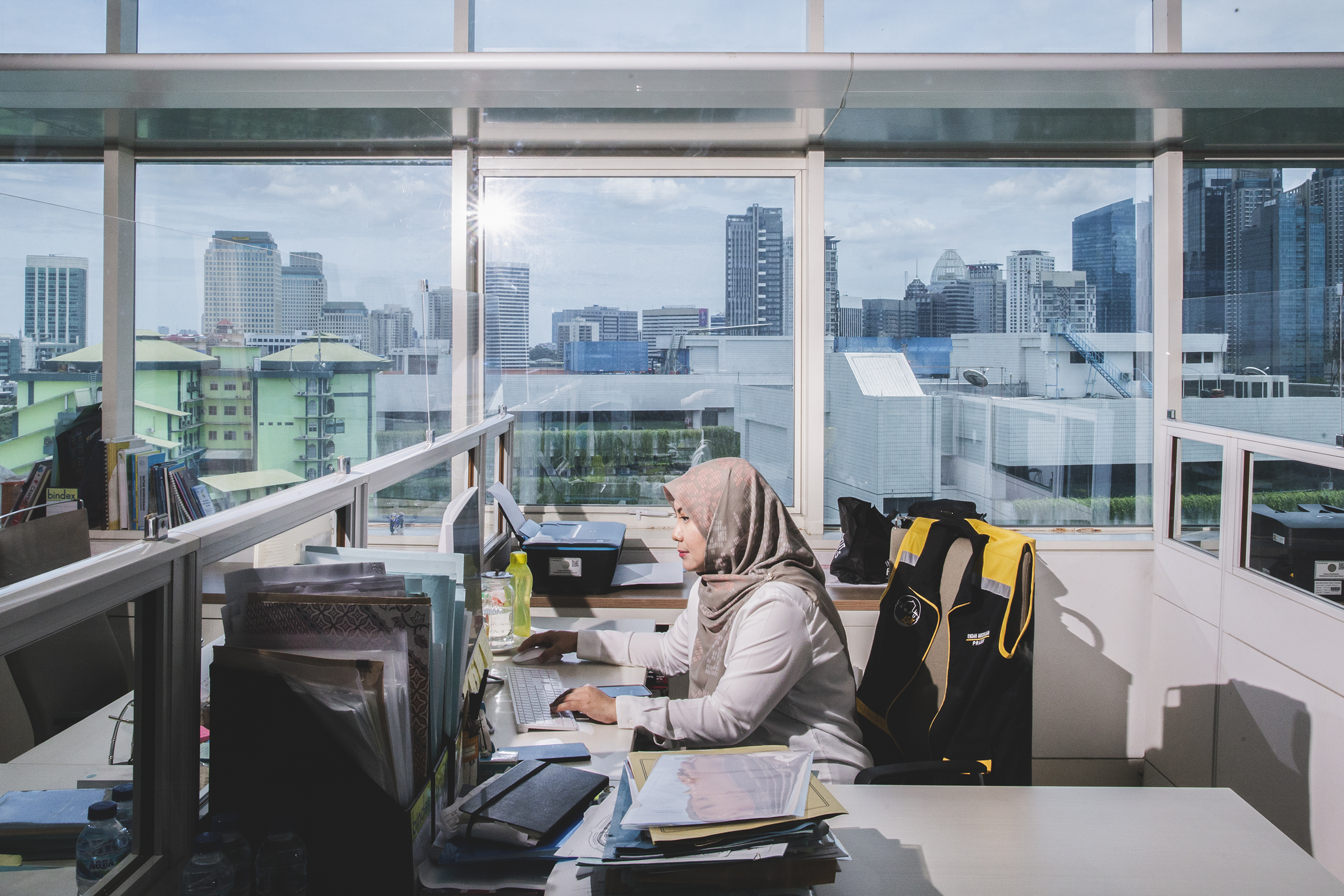
65% 31°C
An office employee works at the Ministry of Public Works and Housing, a green building in Jakarta. Indonesia, 2022
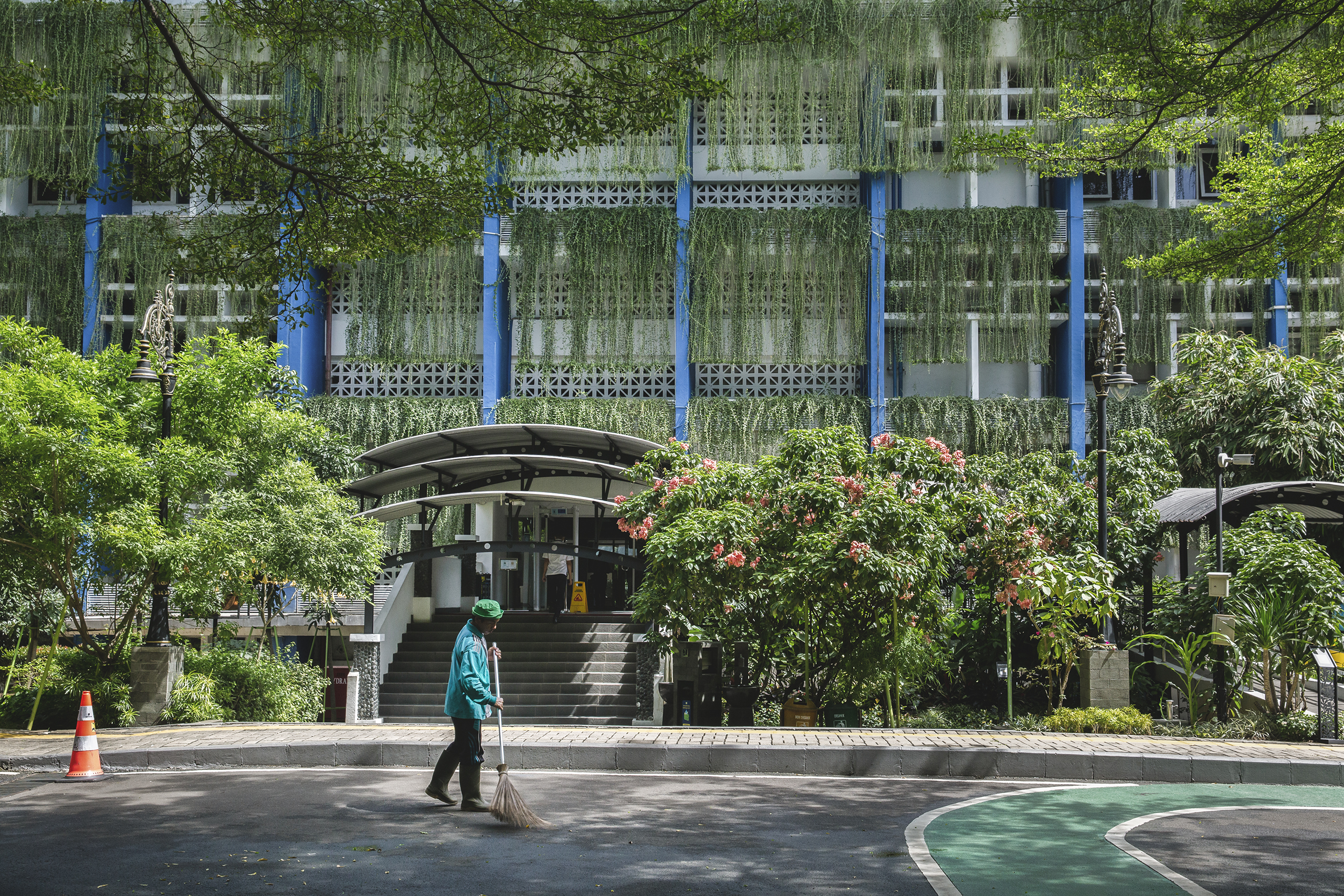
69% 30°C
A worker sweeps the courtyard of the Ministry of Public Works and Housing, a green building in Jakarta. Indonesia, 2022
Ant studio beehive system
The evaporative cooling principle has been known for centuries in India and has been widely applied to ensure thermal comfort. When the evaporation of a flow of water is facilitated by an air ventilation system, water changes status from a liquid to a gas, acquiring thermal energy from its surroundings, thus resulting in a cooling effect. The so-called evaporative coolers – commonly used in northern India before the monsoon season rely on the same principle. Ant Studio, an architecture studio south of Delhi, cools down parts of buildings and heat exhaustion from machines with the use of passive screens made in terracotta. Beehive was installed in front of a machinery which expels waste heat from manufacturing, exposing the workers to a continuous outflow of air in excess of 50 degrees Celsius during summer, at a speed of 10 meters per second. The water recycled from the factory at room temperature, poured onto the surface of the cylinders, leads to a temperature drop of more than 15 degrees Celsius, with a recorded air flow of 4 meters per second. Since 2018, Beehive has been installed in a number of different locations in India as a permanent cooling asset or as a temporary art installation.
When air circulates over a water flow, it facilitates evaporation, which absorbs heat from the surrounding environment.
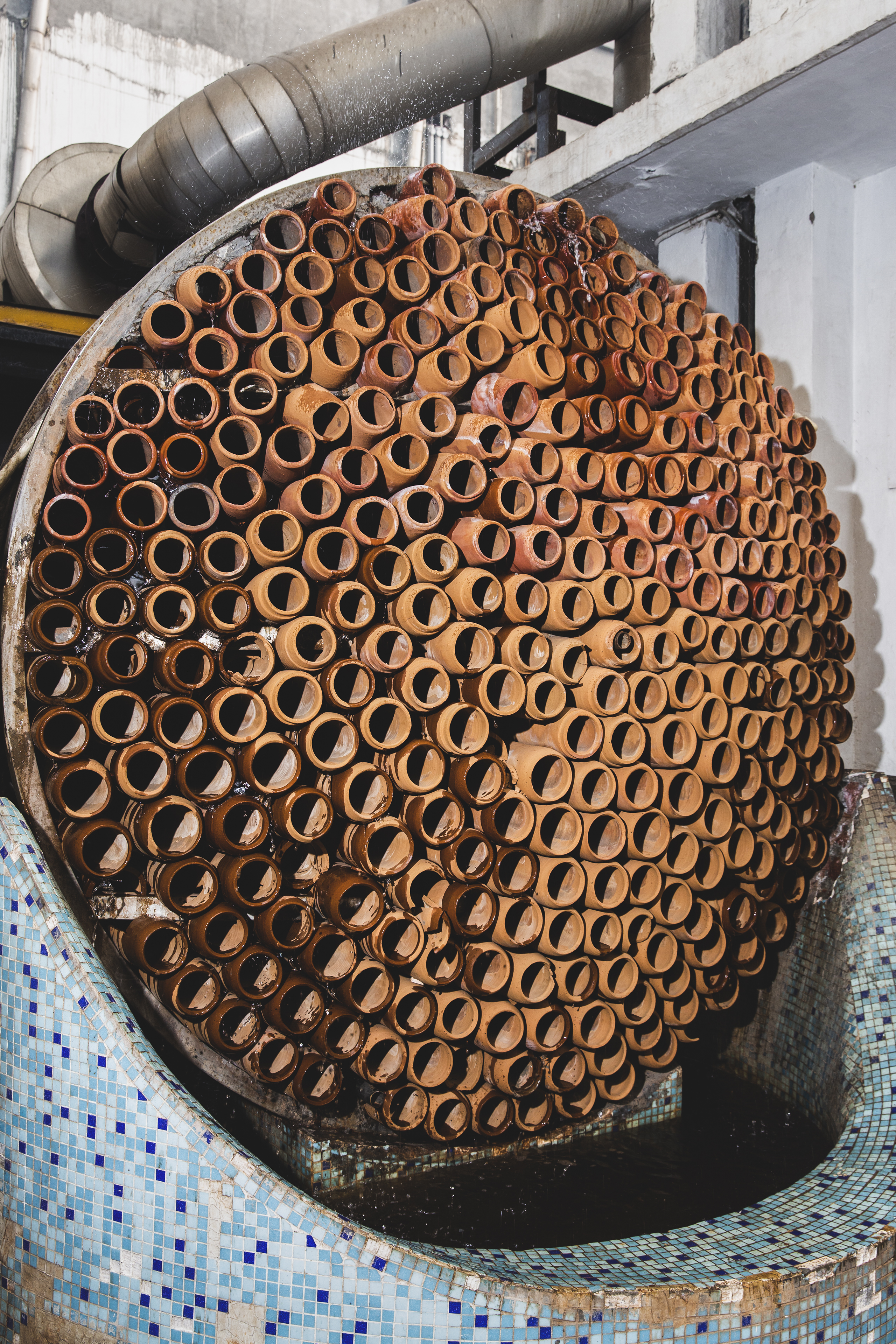
52% 26°C
A beehive structure made of pottery is installed in front of a machine that expels heat waste from a manufacturing facility of Deki electronics in Delhi. India, 2019
In India and Indonesia, examples of vernacular architecture designed to mitigate heat indoors can still be found. Today, this ancient wisdom is being revived for the wealthiest.
In India, long before climate change and the widespread electrification of the sub-continent, Indians used to keep themselves cool through a rich variety of passive techniques. Just a century ago, the maharajas of Rajasthan could enjoy pleasant breezes in their palaces thanks to clever architectural features, while in historical city centres like Old Delhi the inhabitants kept the heat outside of settlements during summer thanks to thick walls, wise building orientation, and narrow lanes.
One renowned expert of vernacular architecture, Vinod Gupta, describes the emperor’s throne at the Red Fort in Delhi as “surrounded by two sets of columns about four meters apart, each set accepting curtains and screens according to the need at any time. It is said that in summer there were three sets of screens used, two of them of grass mats kept wet by sprinkling water. Heavy quilted curtains were suspended in place of these screens in winter. In the daytime these curtains were raised to allow the sun to warm up the building interior and they were lowered in the evening to retain the warmth. Curtains of this type exist in the Deegh Palace near Bharatpur in Rajasthan even today”.
In Indonesia too, out of the city centers traditional design solutions to keep the heat outdoors are still widely visible. Indonesian vernacular architecture is characterized by a gap between the walls and the ceiling, with very high ceilings, a variety of roof shapes, and a porch at the entrance of the house, to facilitate air circulation and shading.
It is rare nowadays to see these principles applied to the construction of modern buildings and apartments, aside from the rising architectural niche of bamboo resorts in heavenly, luxury spots mostly aimed at tourists. These beautiful constructions, inspired by locally-sourced materials, are characterized by organic shapes and the absence of walls, letting nature into the building, as prescribed by traditional wisdom.
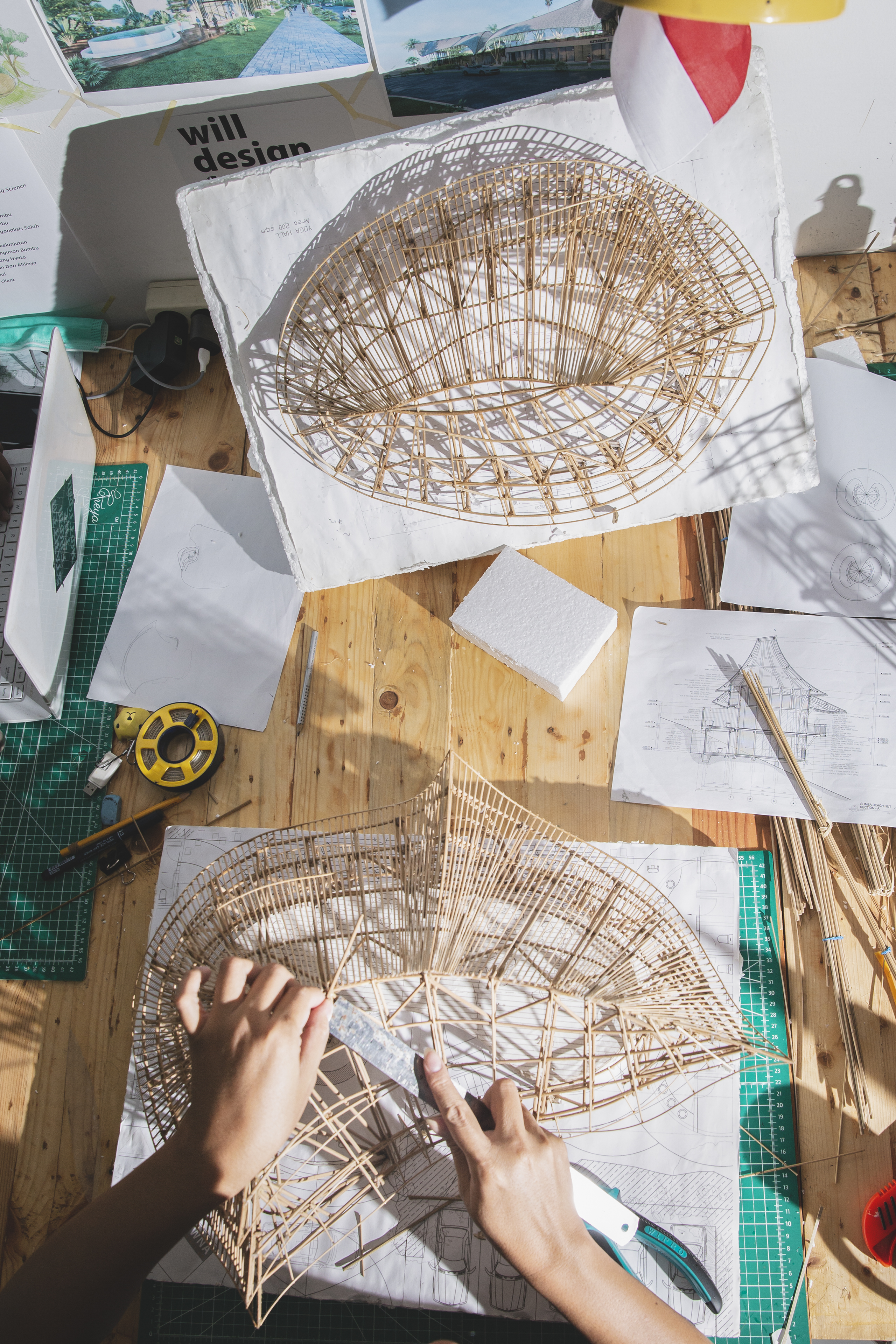
91% 25°C
Widhi Nugroho, 42, the owner of WNA, a luxury bamboo architecture studio, creates a scale model of a building he is designing. Bali, Indonesia, 2022
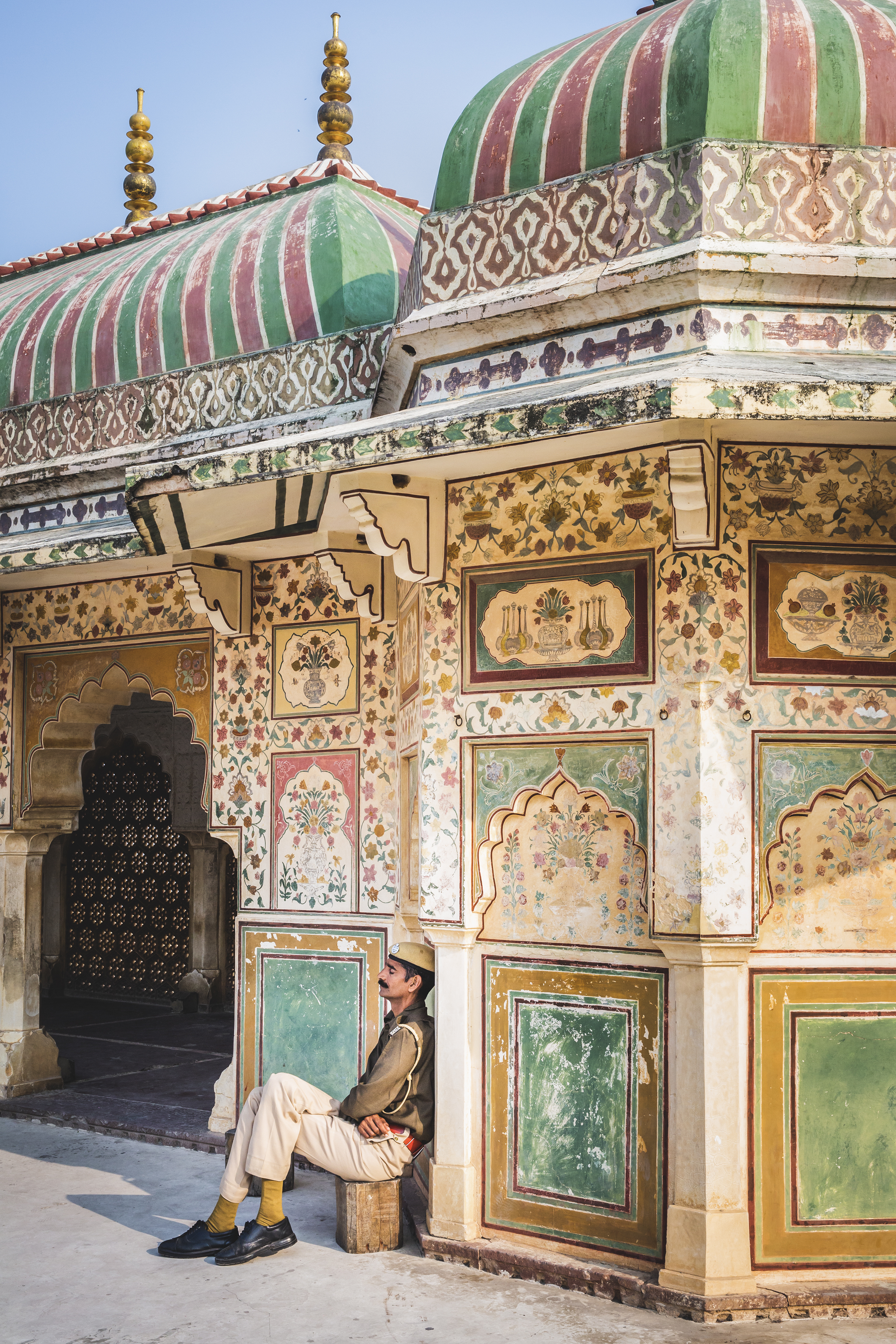
60% 23°C
A guard rests in the shade at Amer Fort, built in 967 AC according to the passive cooling principles of Rajput and Mughal architectures in Jaipur. India, 2019
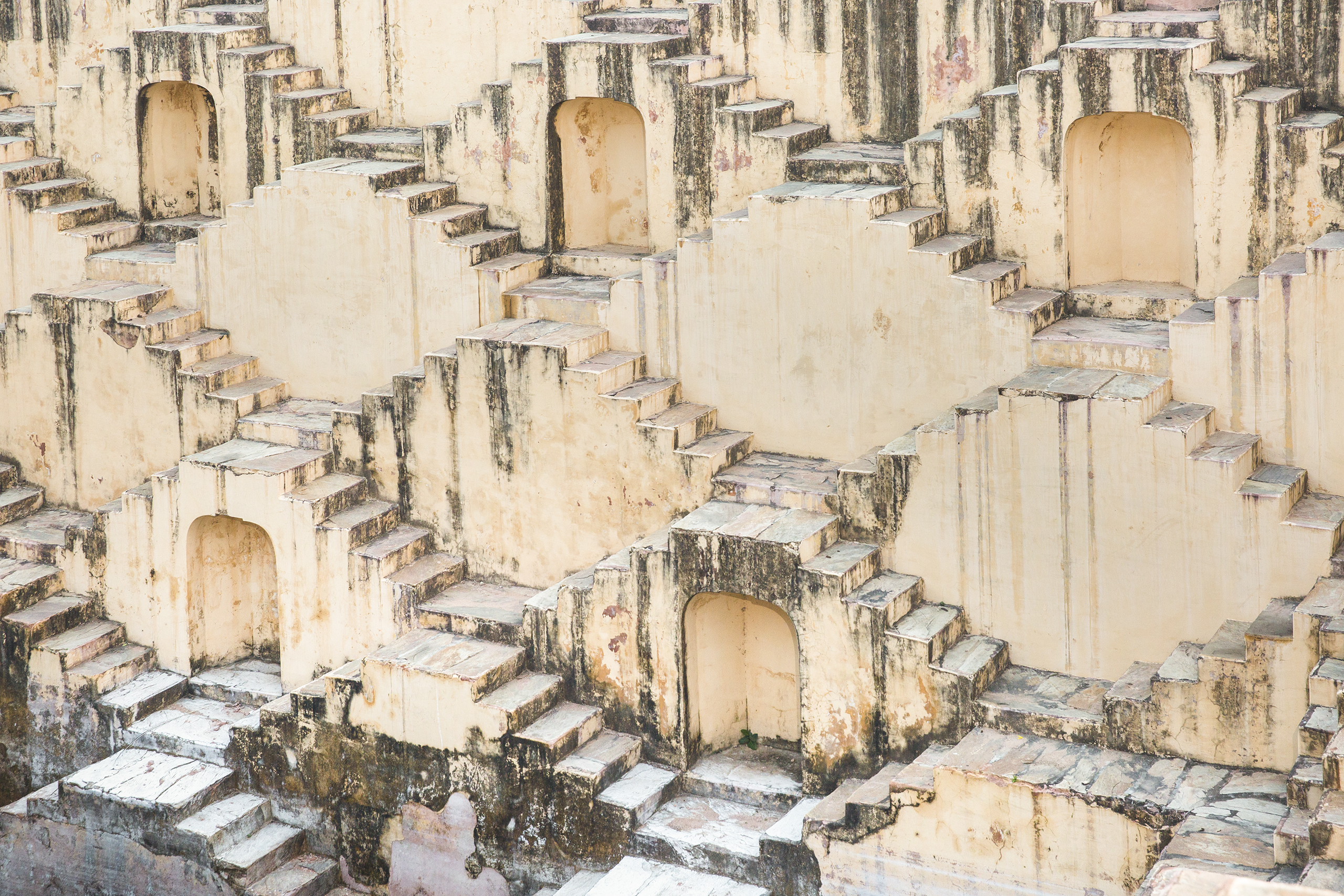
77% 19°C
Panna Meena Kund, a stepwell in Jaipur. Stepwells played a significant role in western India's societies from the 7th to the 19th century, allowing people not only to harvest water but also to seek relief from the heat. India, 2019
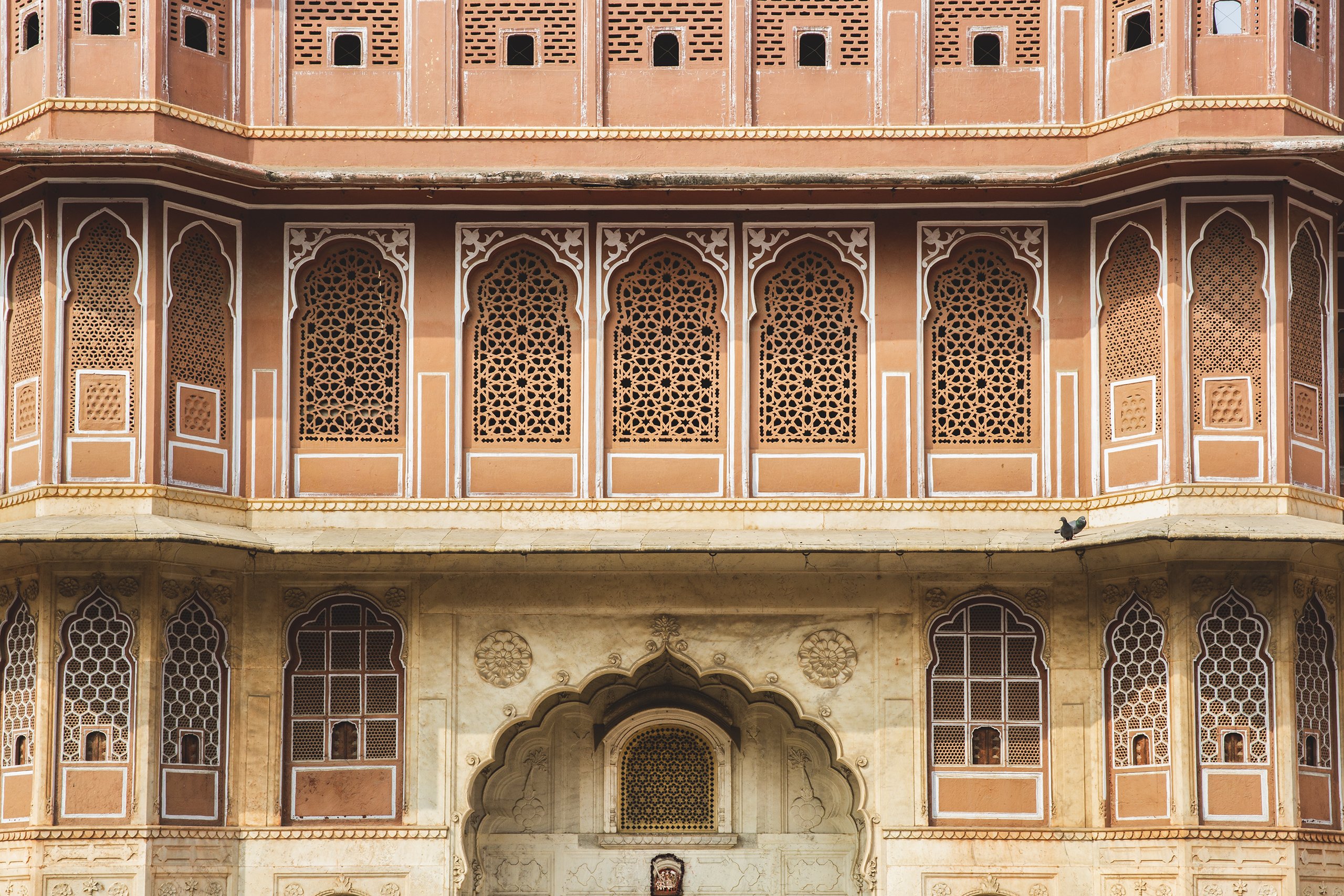
55% 24°C
The City Palace in Jaipur, established in 1727 by Maharaja Sawai Jai Singh II when he moved his court from Amer, displays typical Rajput and Mughal architecture. India, 2019
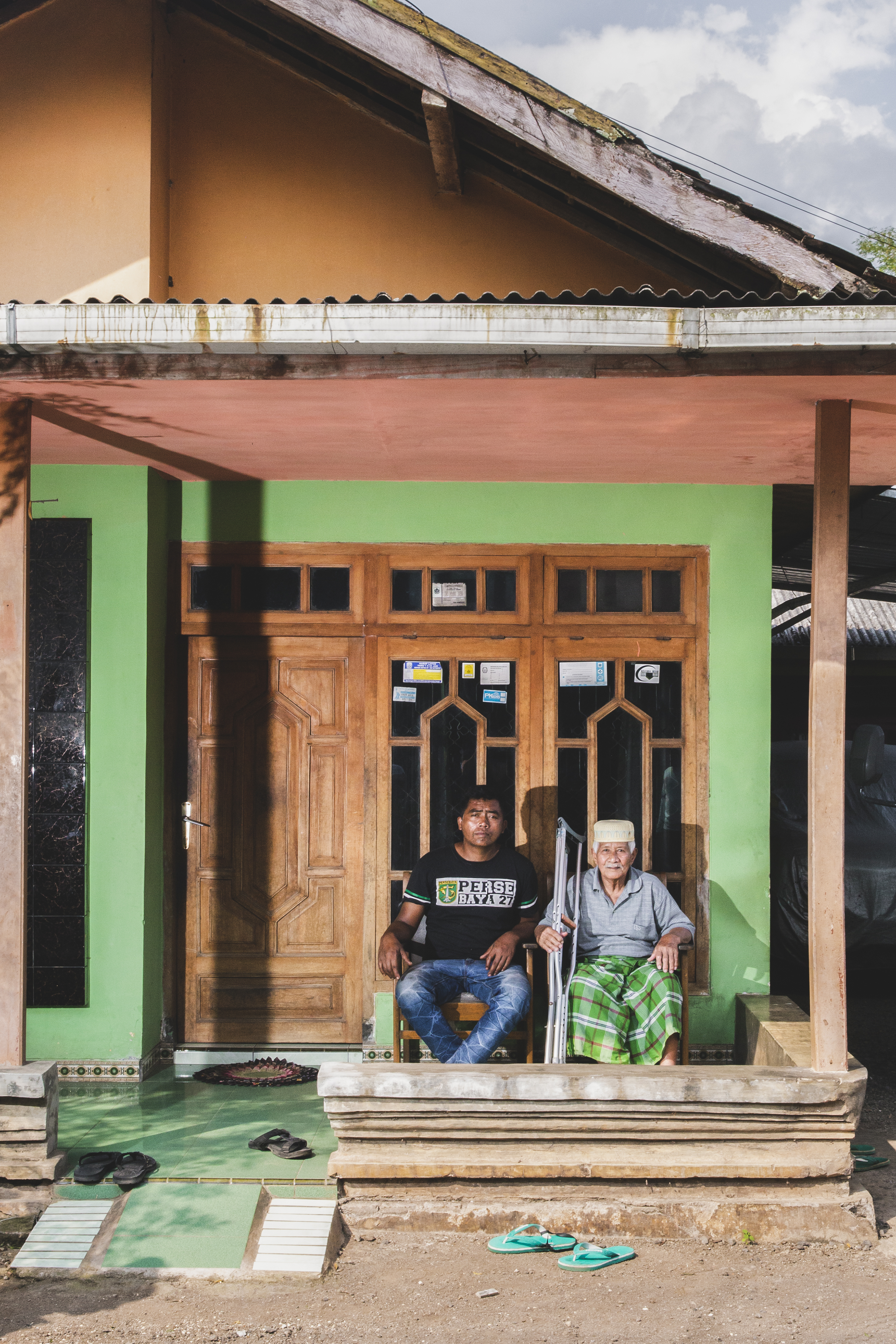
87% 25°C
Relatives sit on the porch of their house, built according to some of the principles of traditional Javanese architecture, near the city of Bondowoso, Java. Indonesia, 2022
Late Indonesian Architect and lecturer, Eko Prawoto was known for applying traditional knowledge to modern architecture. Prawoto emphasizes how important it is for younger generations of architects to use local materials like bamboo to avoid losing traditional knowledge and methods. “We could call it the beauty of the imperfection, trying not to be always very precise and just accept the way it is. We actually need to make peace with nature. Green building and architecture are concepts that do in fact exclude the surroundings, because architects only think about their own building footprints, while to be truly green, we should be part of nature”.
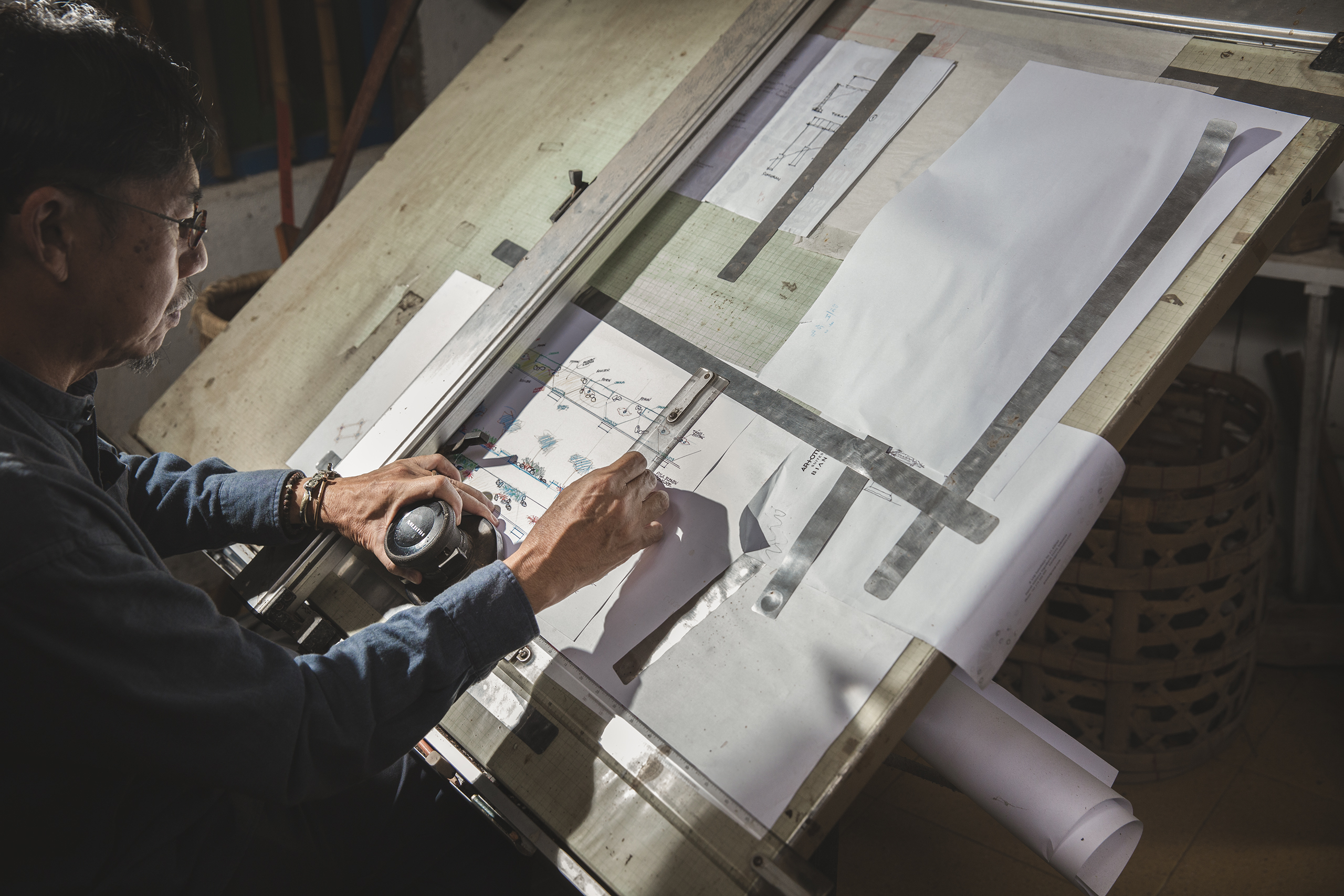
Eko Prawoto, Indonesia
75% 30°C
Eko Prawoto poses outside of his house near Yogyakarta, Indonesia, where he has lived for the last 10 years of his life to reconnect with nature. “Only in the past 10 to 15 years has vernacular, or traditional, architecture returned, as architects are becoming more conscious of the environmental implications of their work”. They are now adopting the essence of all basic principles of traditional architecture: open spaces, open roofs and smart building orientation. Prawoto says that today’s habit of using AC is “more related with the social and psychological spheres rather than with the physical one. Foreigners are visitors for a short period of time, unable to adapt to the climate, so they want an AC, fine. But for us, AC should just be like a medicine: you need to take it only when you are very ill, when days are very very hot, but if we have to take a medicine everyday, then this is not normal anymore”.
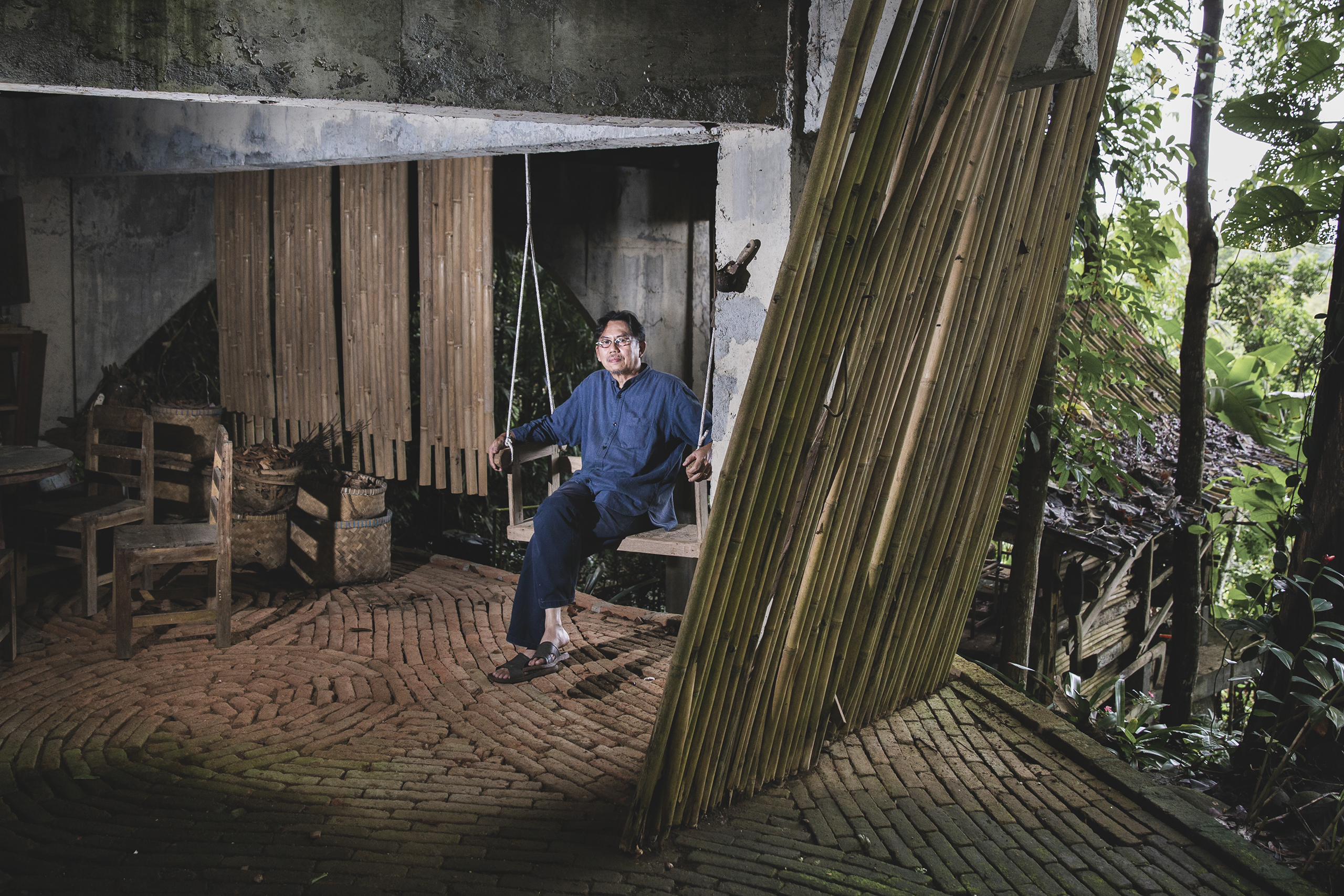
People living in disadvantaged communities are often “trapped" by heat.
During her ethnographic fieldwork in Rio de Janeiro, Antonella Mazzone observed that people living in slum-like conditions are more exposed to thermal discomfort during the hot season. People living in informal settlements usually lack access to potable water and sanitation, as well as green spaces and water bodies. Such environmental conditions can provide shade, improve natural ventilation and cool down local microclimates. Moreover, the agglomeration of houses and materials used (typically unfinished bricks with metal or PVC roof) tend to exacerbate temperatures indoors. People living in middle-class neighborhoods, instead, have more access to green corridors and waterbodies, tend to spend more time in air-conditioned spaces and actively seek cooler environments by going to local green spaces.
People living in disadvantaged communities are instead “trapped" in their locality. This could be characteristic of the geomorphology of Rio de Janeiro’s favelas, which are typically built on top of hills. Because of the location of the favelas, public transportation services are scarce, unreliable, expensive, and of poor quality. The lack of affordable and reliable transportation can trap people in their hotspots, without safe dwellings, safe water, green spaces, and waterbodies.
Low-income communities tend to lack access to mechanized cooling as well, predominantly because of the lack of financial means, but also because they lack reliable energy distribution networks. As a result, favelas’ dwellers tend to adopt cooling practices which give immediate relief, but of questionable long-term results. They tend to drink more iced alcoholic beverages like geladinha, as well as indulge in overly sweet, industrialized fruit juice, and food. The poor quality of food (excessive salt and sugar, as well as low vegetable and fruit intake) is also a factor which contributes to dehydration and impedes thermoregulation.
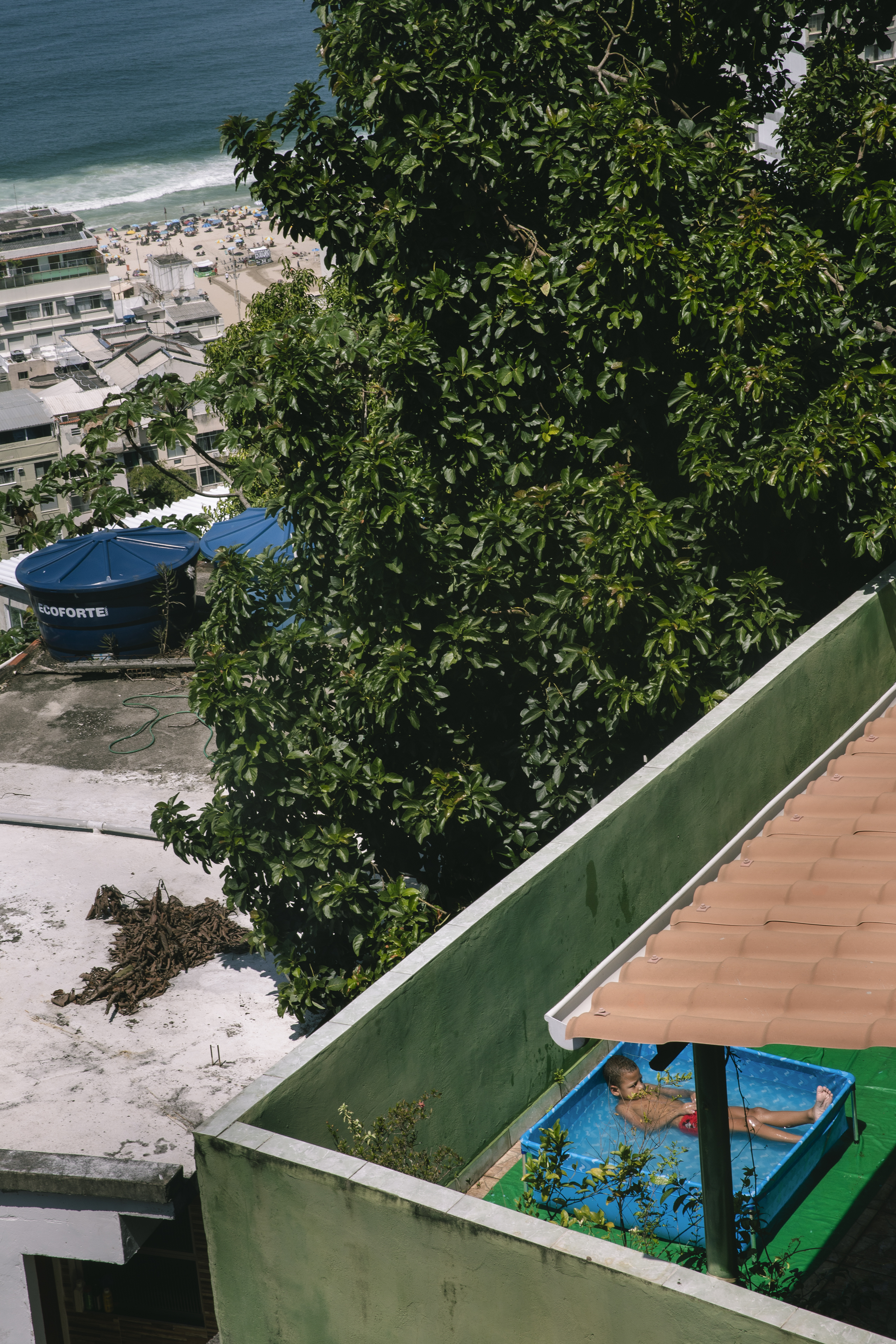
64% 31°C
A child seeks relief from the heat in a plastic swimming pool on a roof of the Babilônia favela, Rio de Janeiro. In the background the wealthier neighborhood of Leme. Brazil, 2022
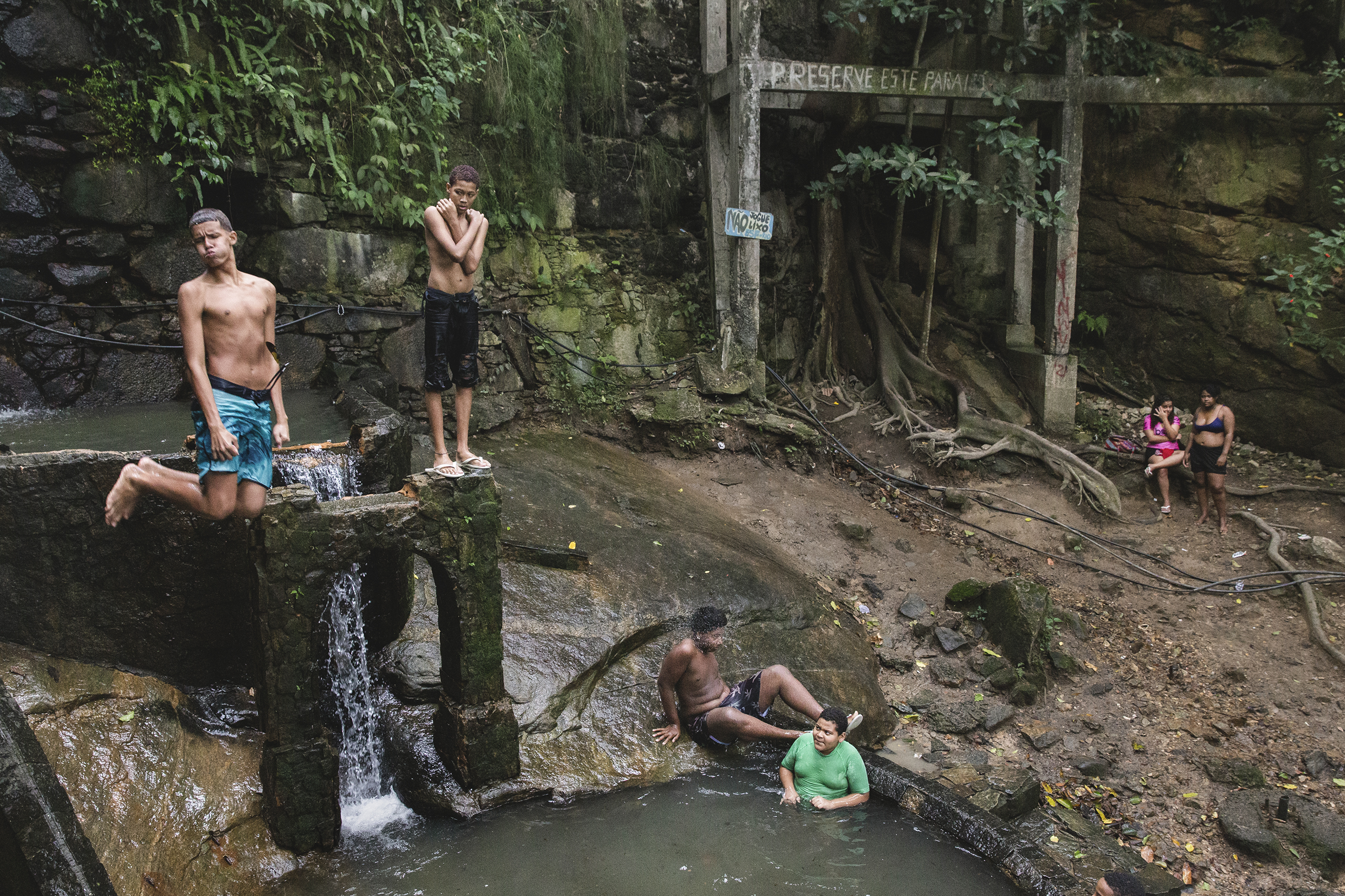
The use of water is the most common cooling strategy across cultures.
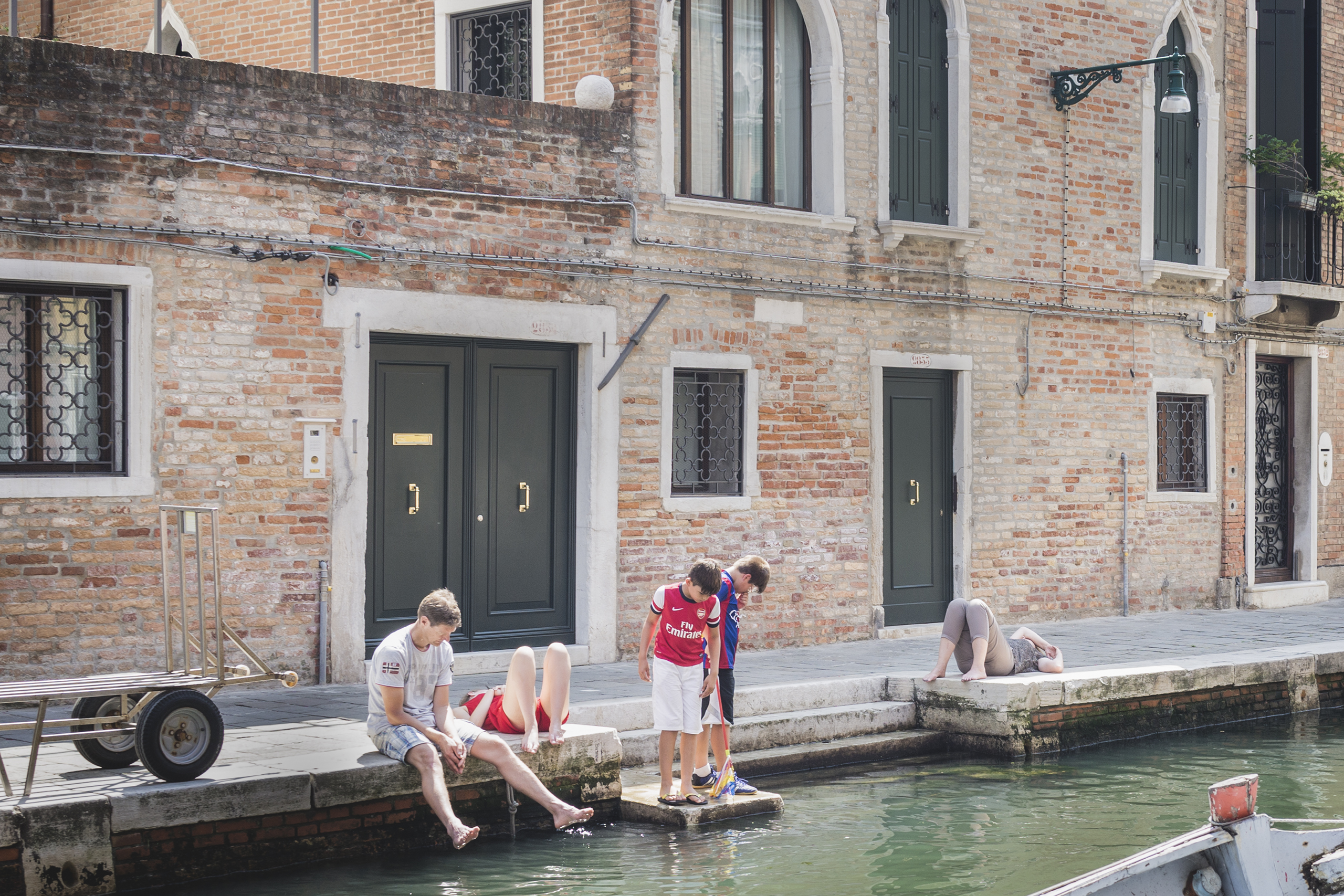
82% 28°C
A family of tourists seeks relief from the summer heat in Venice. Italy, 2015
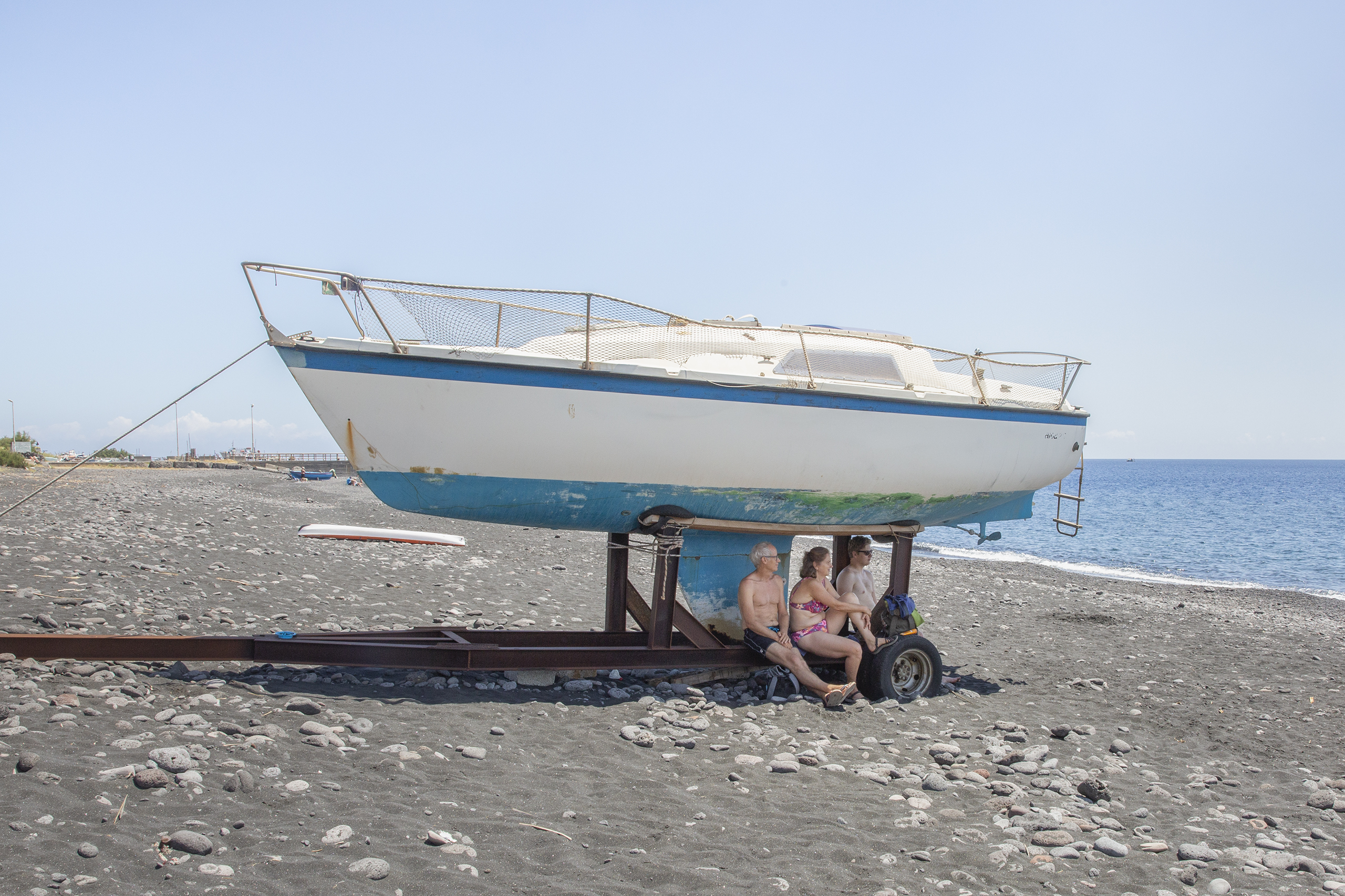
75% 25°C
A German family sits in the shade of a boat pulled aground on the beach in Stromboli, a volcanic island of Sicily's Aeolian archipelago. Italy, 2022
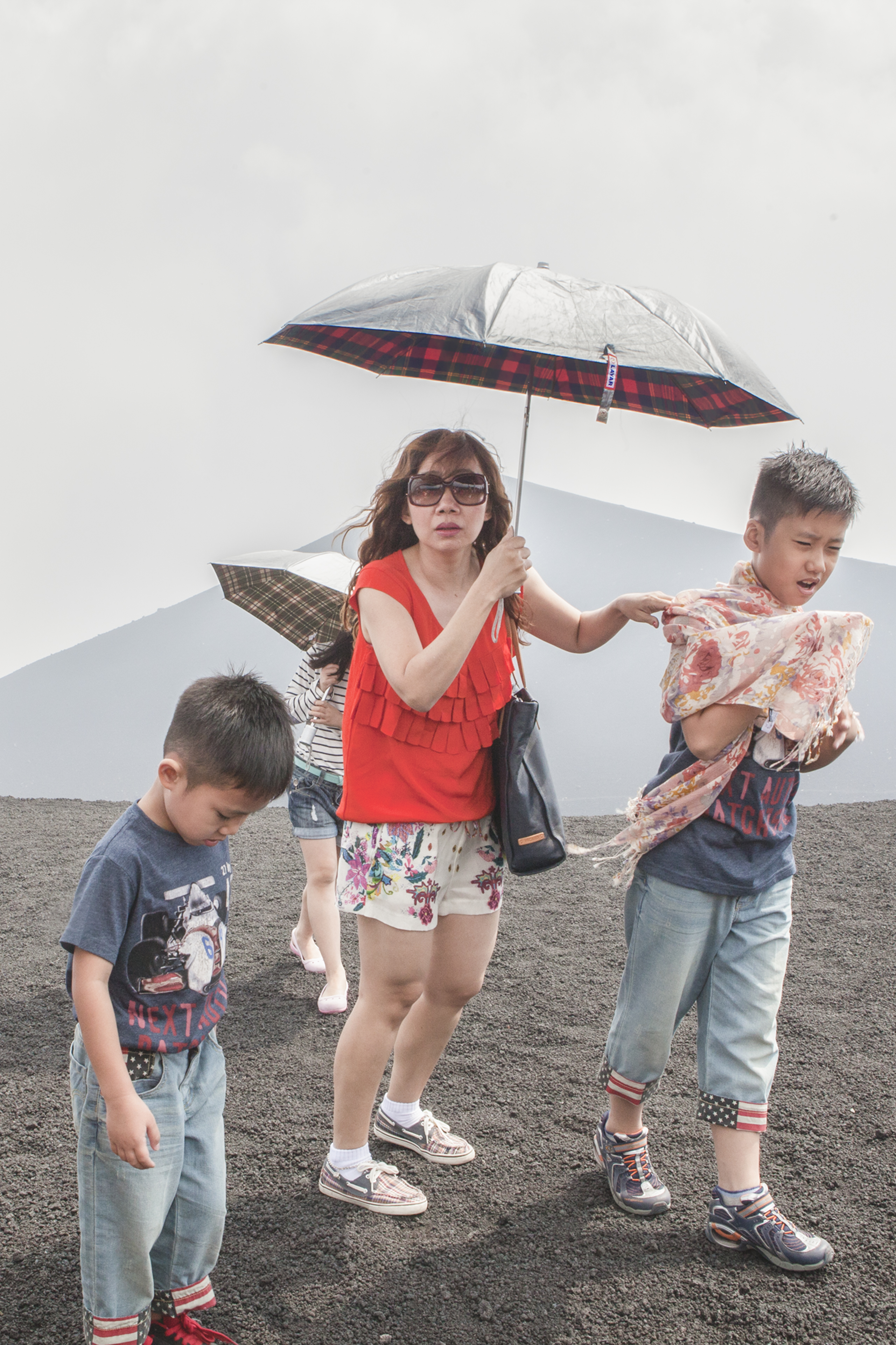
54% 24°C
Tourists use umbrellas to seek protection from the sun on Sicily's Mount Etna. Italy, 2013
How do people cope with heat in Brazil?
Increasing temperatures are a potentially lethal threat in tropical geographies where precarious urban infrastructures, informal urbanization, socio-economic and spatial exclusions create new forms of thermal vulnerabilities and deprivations.
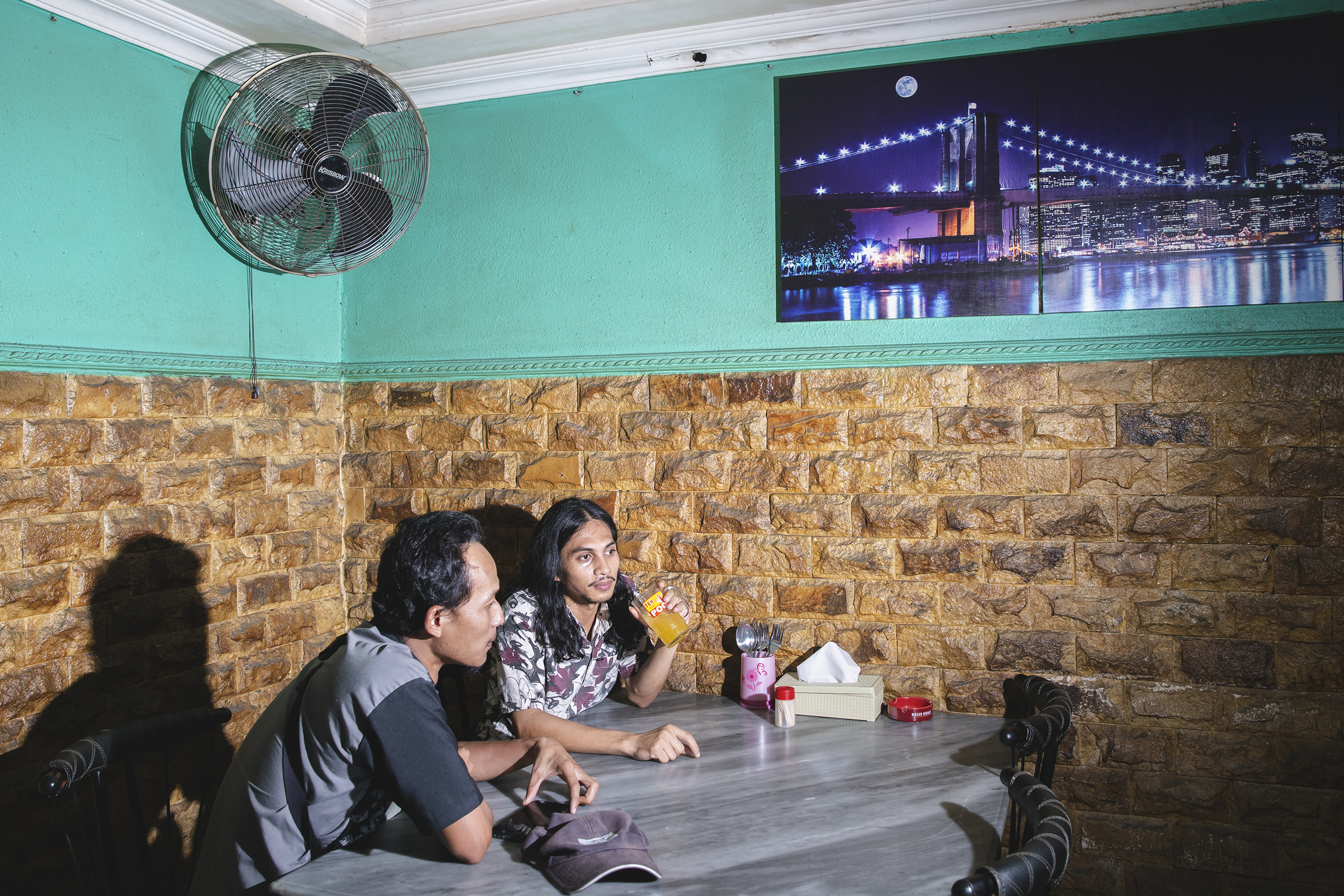
86% 28°C
Men sit for a cold soft drink in a Sumatran restaurant close to Bali's airport. Indonesia, 2022
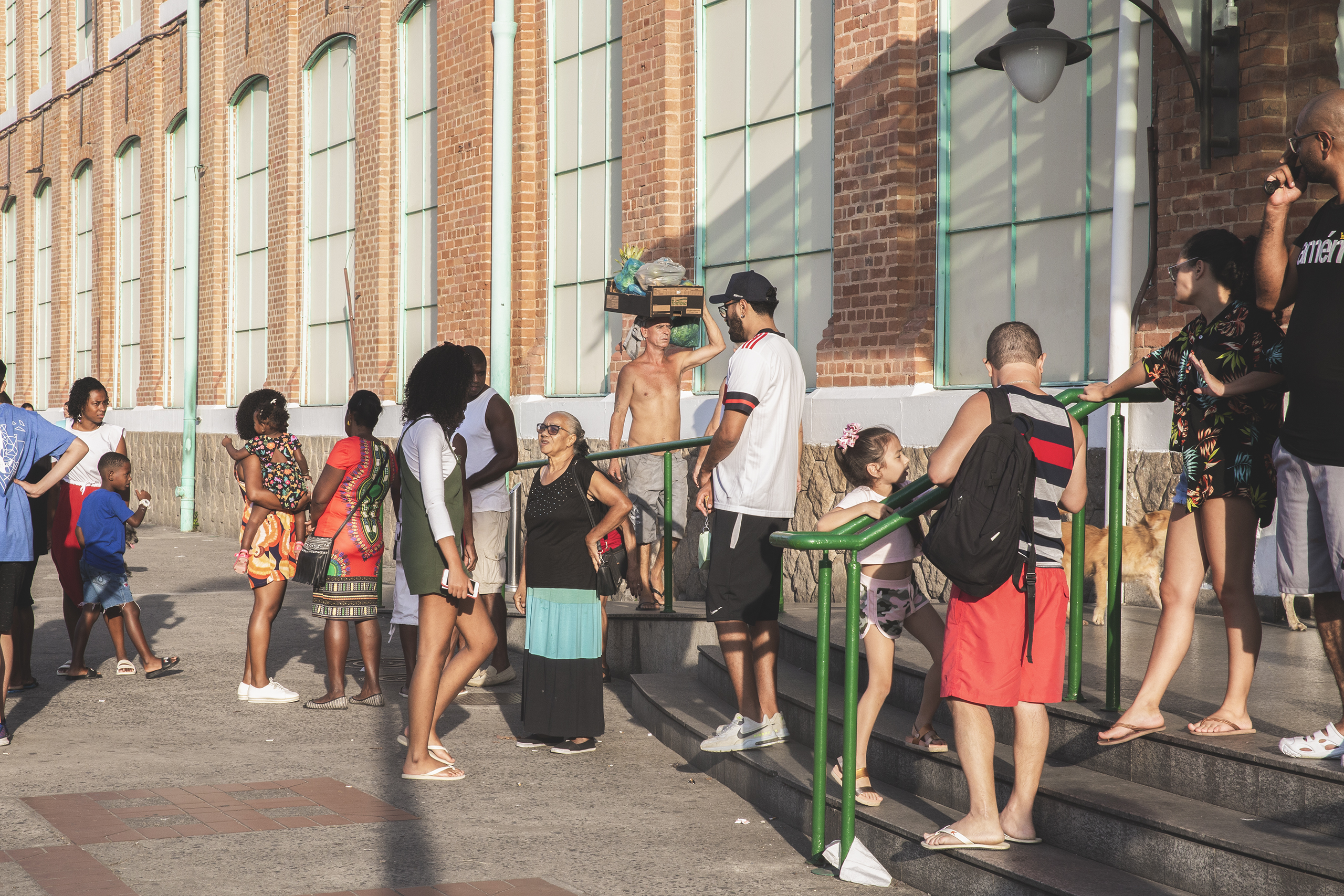
76% 26°C
Residents of Bangu chat outside the shopping center of the area, a desirable destination also because of the AC that they can rarely afford at home. Brazil, 2022
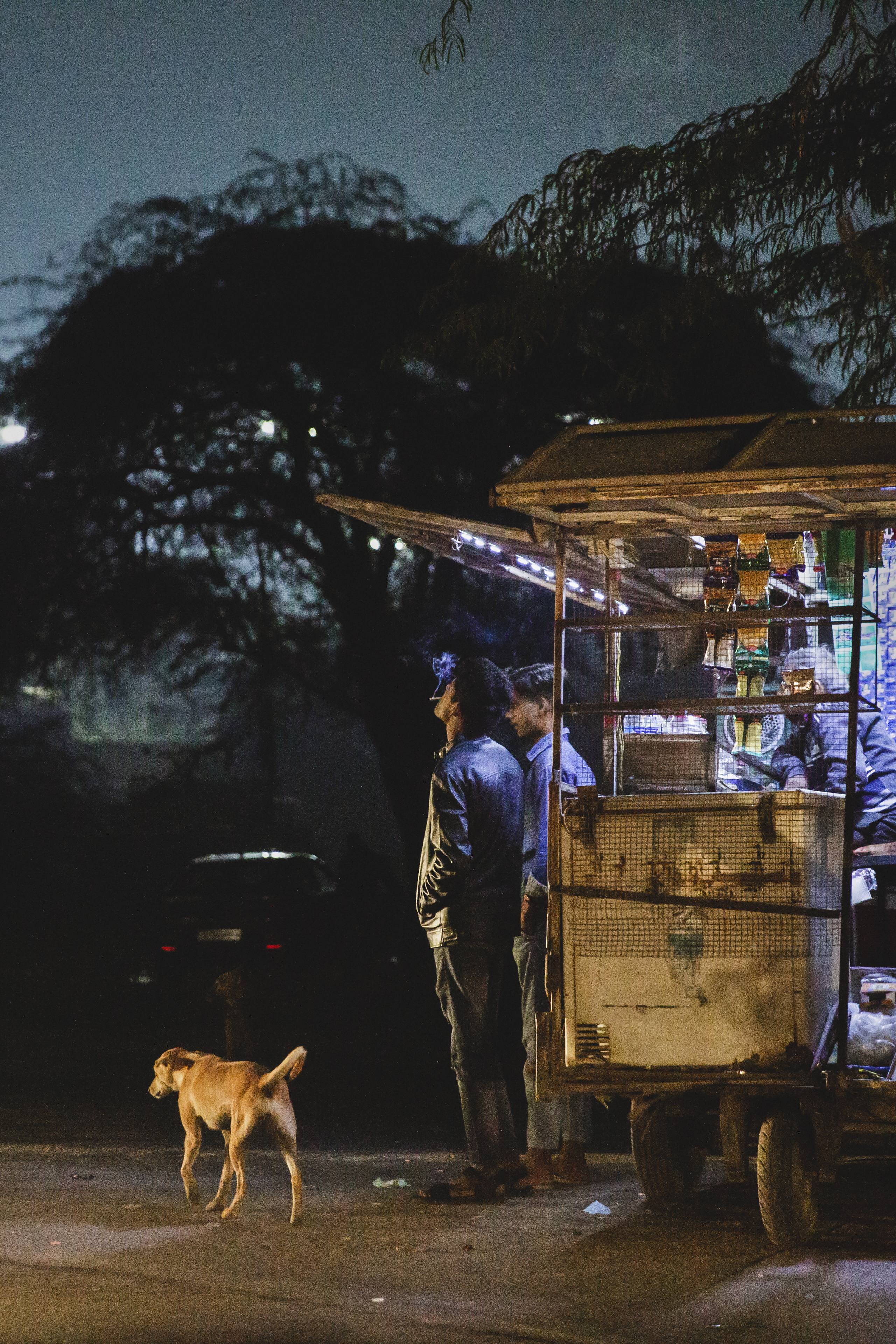
90% 20°C
A street seller and clients stand in the evening heat on the outskirts of Delhi. India, 2019
Cristiano, 47, enjoys the cooling effect of the pool during a Sunday barbecue with relatives and close friends. Cristiano works as an Uber and tourist driver in Rio de Janeiro and lives in a favela located on the hills of the neighborhood of Santa Teresa. When he drives his clients, he always keeps the AC running in the car. When he is not working, he mainly uses the pool to cool down during hot days. “We even use the pool at night if we need to, alongside the outdoor shower, which I use at least 4 times a day to keep my body temperature low. I have only one AC unit at home, in the bedroom. We use it every night when it’s hot, to be able to sleep. It stays on all night, until the next early morning when I wake up for work”.
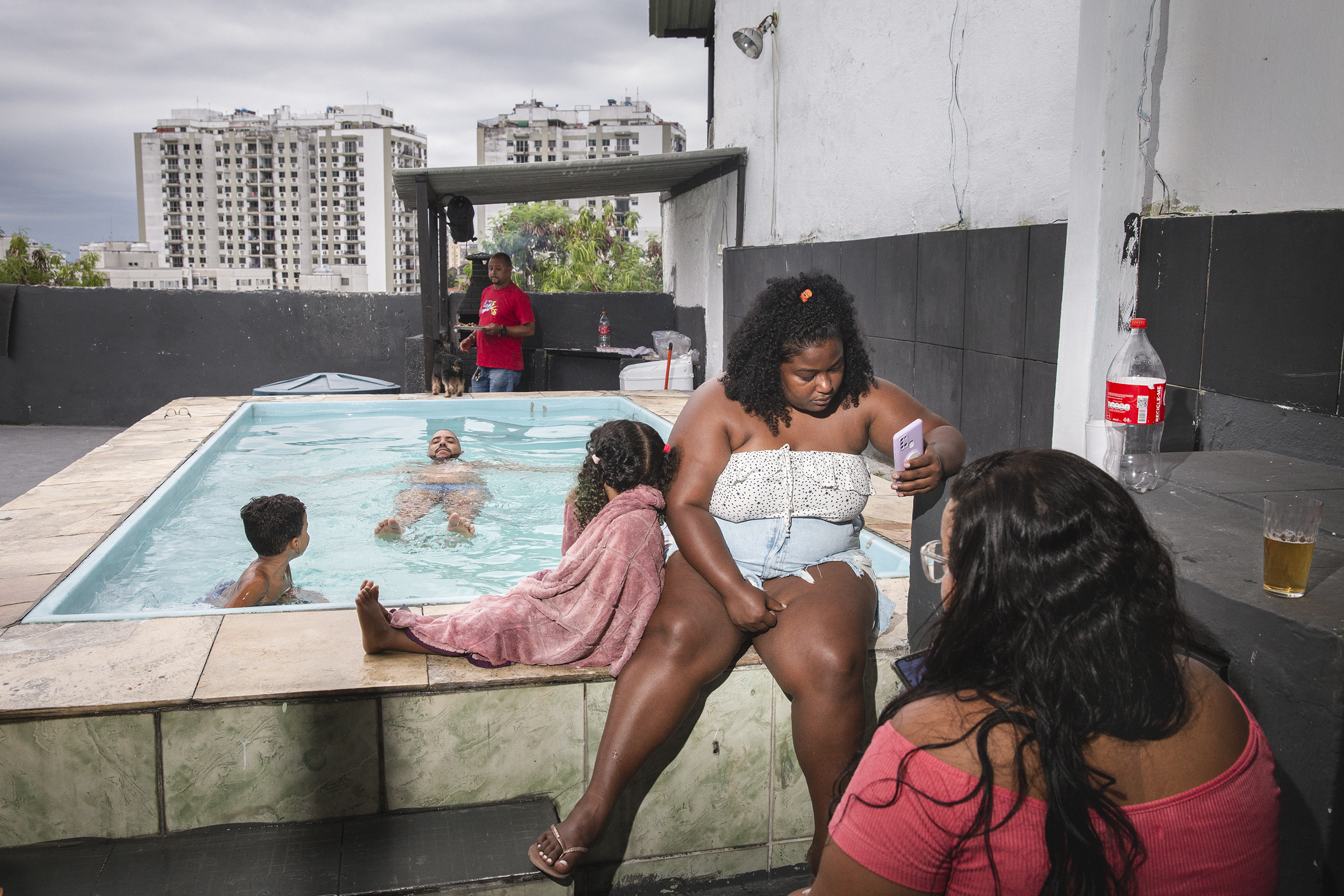
Cristiano, Brazil
79% 27°C
Andrea Squarci, 69, watches a tennis match on TV during a heatwave at Lido dei Pini, a seaside location about an hour away from Rome, Italy. The house where Andrea lives, with his wife Chiara, since his retirement in 2019, is right in front of the sea. This allows for good ventilation, especially if compared to the city of Milan, his home for more than 30 years. During hot days, he opens the glass doors and uses fans to create an airstream. “I only use AC when the heat is unbearable, when I feel like I can’t breathe and every activity, however sedentary, becomes suffering”. On this day he closed the doors and windows and turned on the AC because of an outside temperature of 28 degrees Celsius with 68% humidity, relatively high for the month of June.
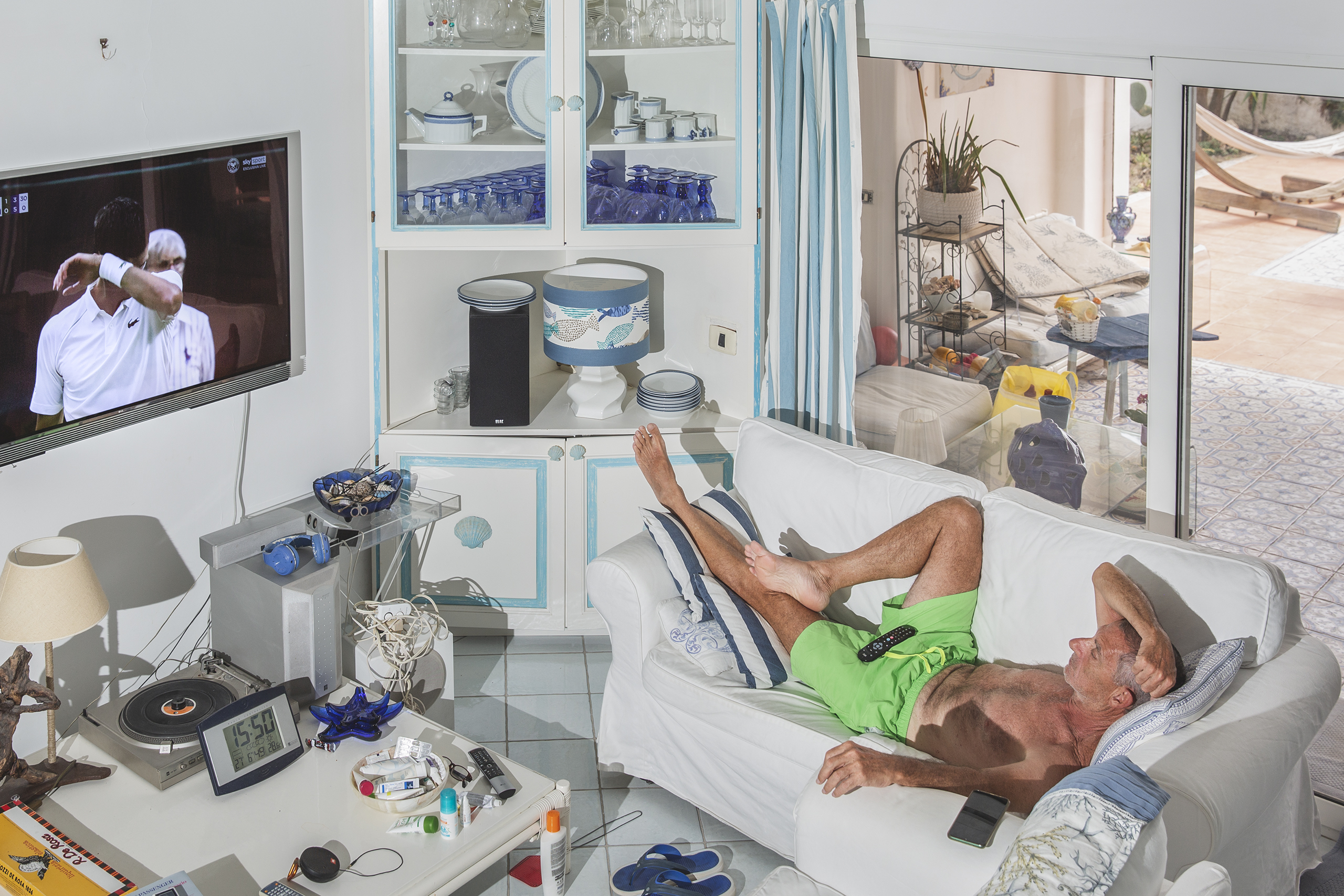
Andrea, Italy
68% 28°C
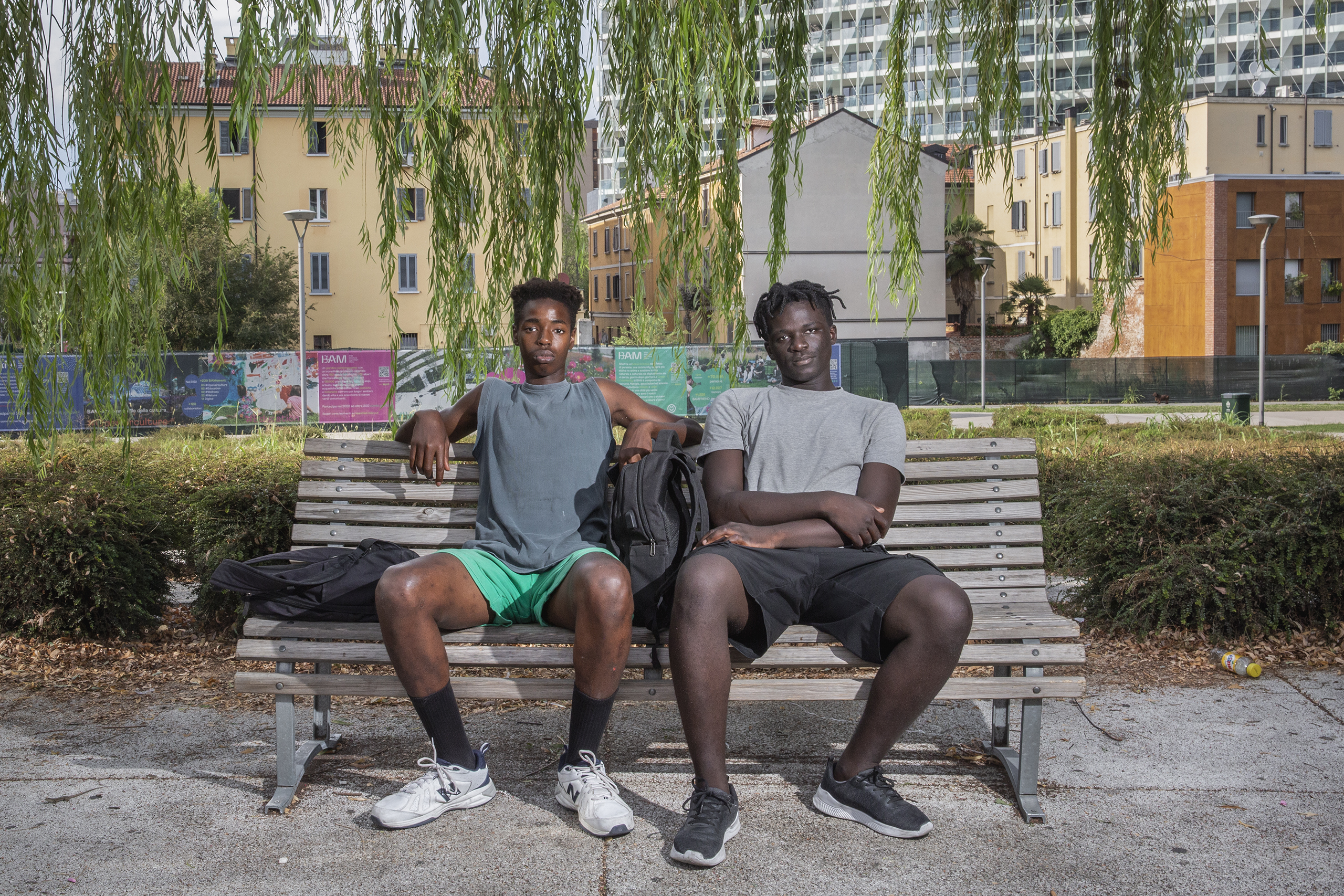
86% 28°C
Ndongo Gueye, 18, and Cheikh Badar Gueye, 19, born in Senegal and raised in northern Italy, sit in the shade at the BAM Tree Library, a park in the financial district of Milan. Italy, 2022
If space cooling were a country, it would consume the equivalent of the energy generated in India today. At this rate, in 30 years, it will reach the level of current U.S. energy consumption. The next few years are crucial to avoid becoming trapped in carbon-intensive habits that would exacerbate the climate crisis. Alternatives to AC do exist, but first, we need a cultural shift.
The global homogenization of building codes and designs has led to the proliferation of AC as the preferred choice to control ambient temperatures during hot days. Or perhaps it has been the other way around. The possibility of powering as much energy as needed that came about during the postwar period eliminated the differences among world’s building and gave rise to an increasingly homogenized building style.
Cooling can save lives. As Salvatore Basile writes in his book “Cool: How air-conditioning changed everything”, this was already known in the 19th century, and many writings of that time describe the stifling and lifethreatening heat that was afflicting the big cities of that time, such as New York City. As AC becomes cheaper and more efficient, it may end up being used in places where natural forms of air cooling or alternative cooling solutions would work just fine. We are facing the serious risk of being trapped in a new vicious, reinforcing cycle made of behaviors, things, and environments shaped by the ubiquity of AC.
There appears to be little discussion around whose viewpoint defines the notion of thermal comfort. It is now quite clear that the epoch of energyintensive, material comfort needs to come to an end. What perhaps is less clear is that sacrificing this mode of living does not mean sacrificing thermal comfort. Perhaps even less known is that cooling needs are embodied in the human experience of cooling, as influenced by the body, the mind, culture and society.
The Cooling Solution is a journey through inefficient and ineffective cooling, lack-of-cooling, hypercooling, and cooling dumping in Brazil, India, Indonesia and Italy. While these countries are extremely different from one another, they all follow a similar trend driving them towards a homogenized notion of thermal comfort. But The Cooling Solution is also a journey through beautiful vernacular architectures, surprising alternative cooling methods, unexpected innovation, and dedicated research efforts. No doubt we will live on a warmer planet, and no doubt AC can and will save lives. However, there is also a great richness in the diversity of cooling options that is waiting to be re-discovered, re-visited and scaled-up.
